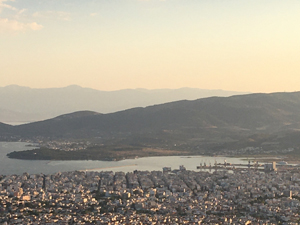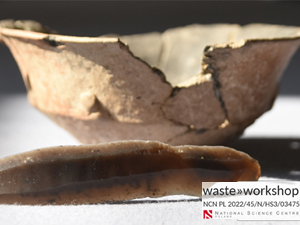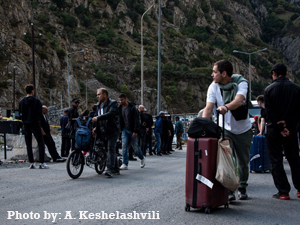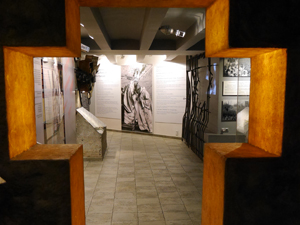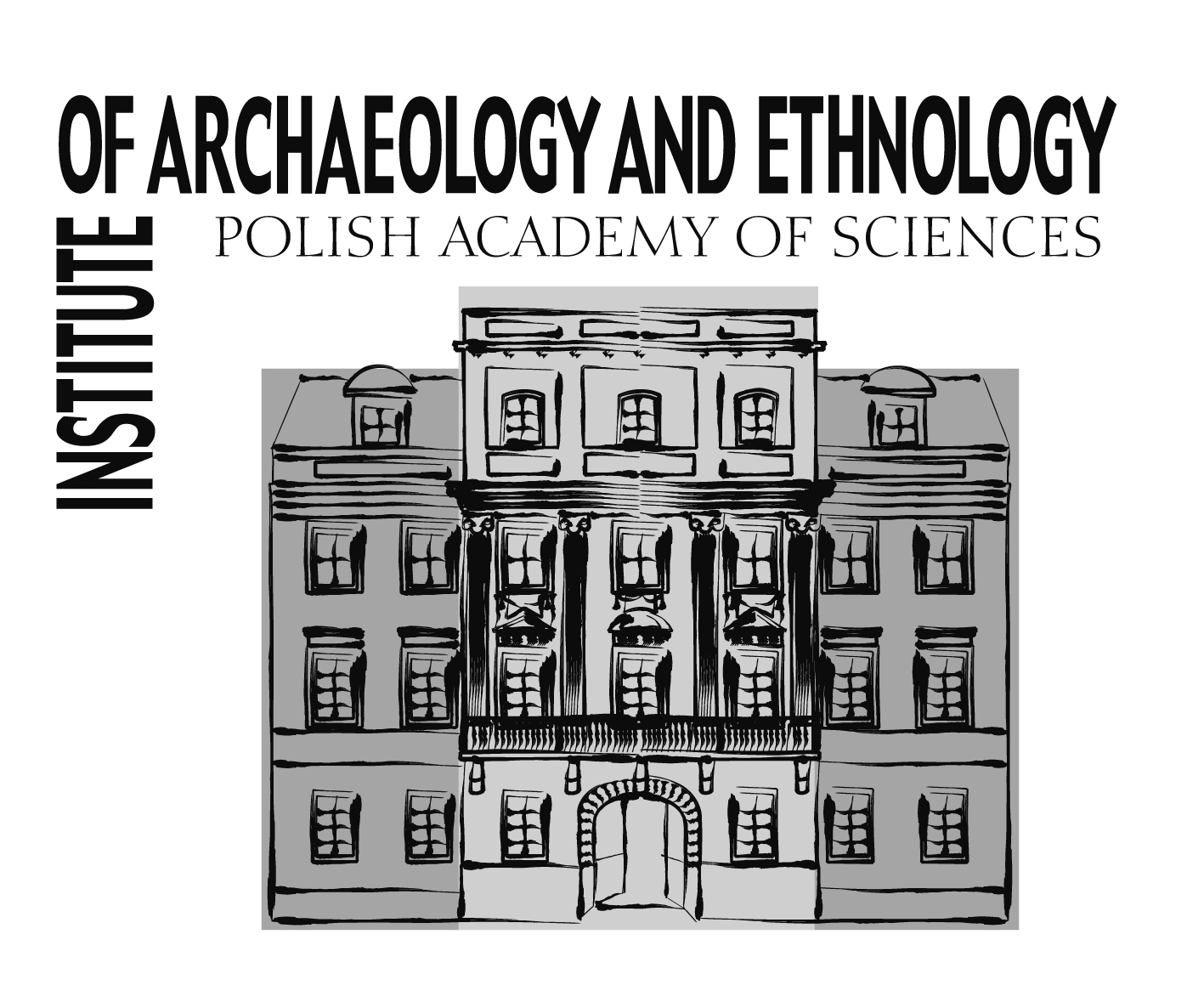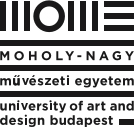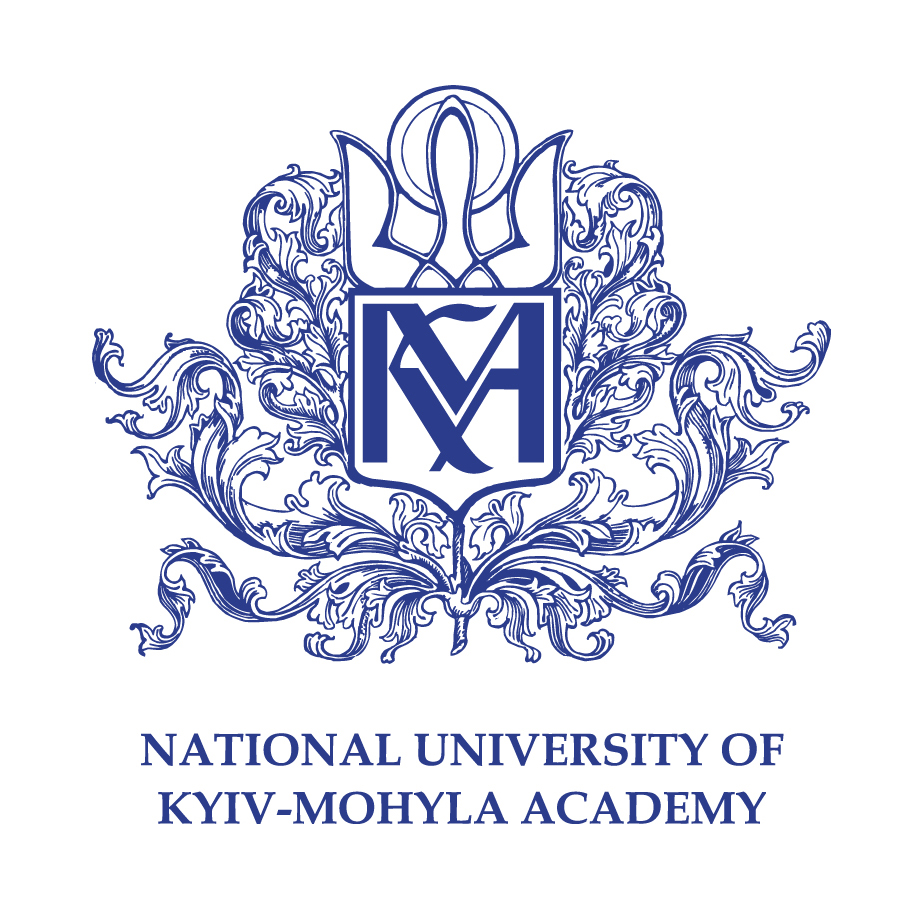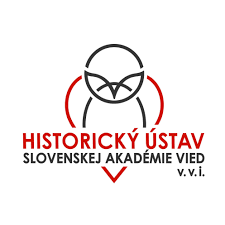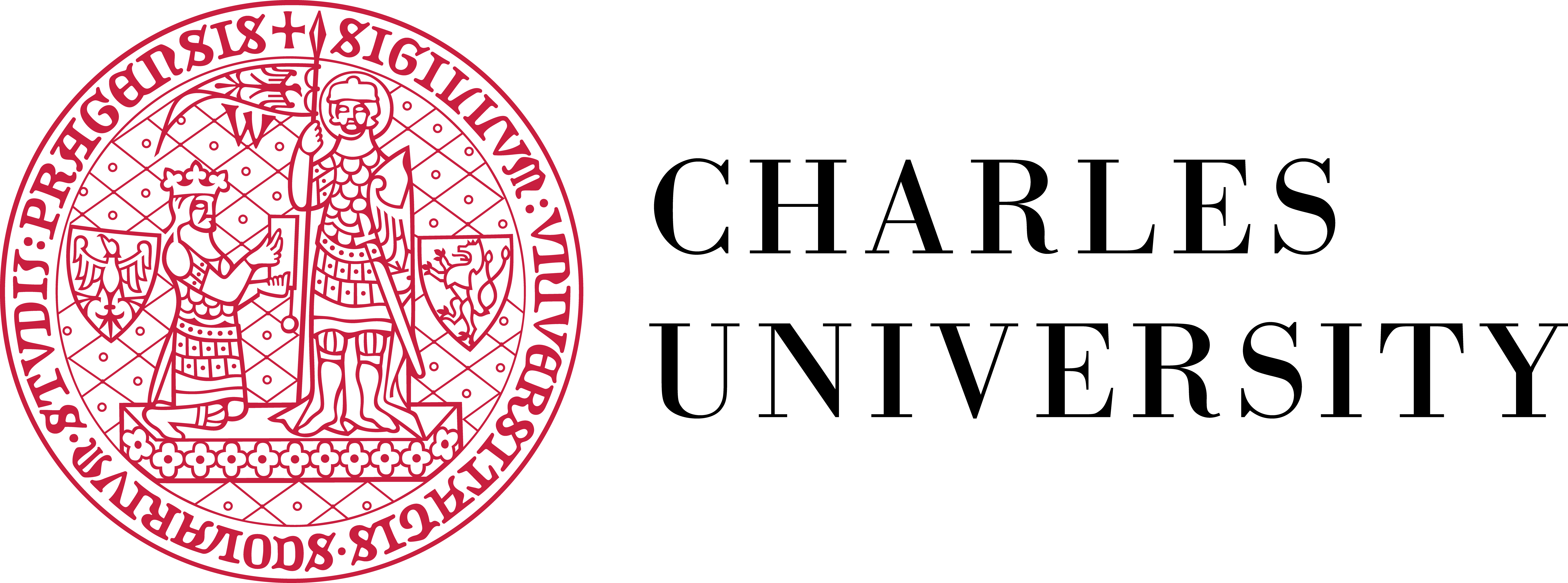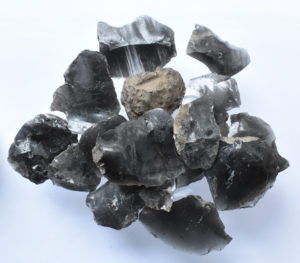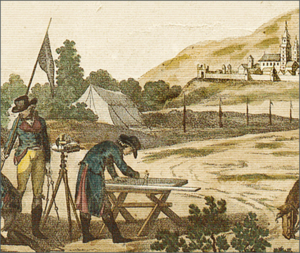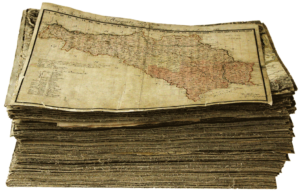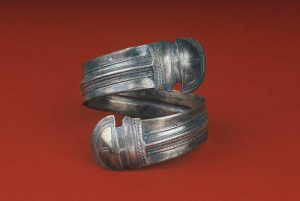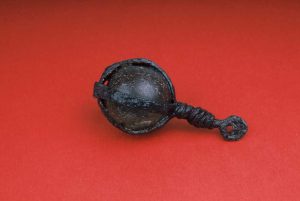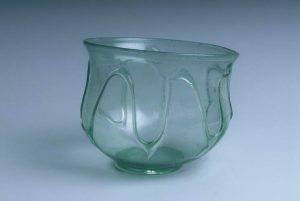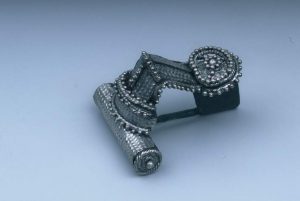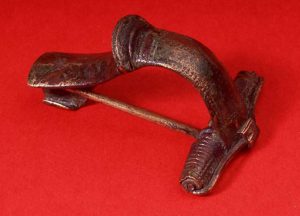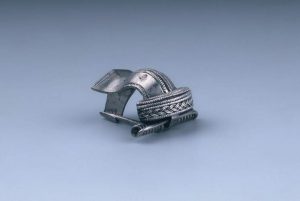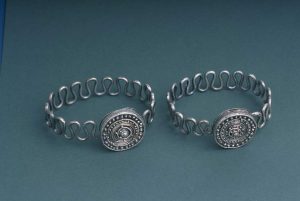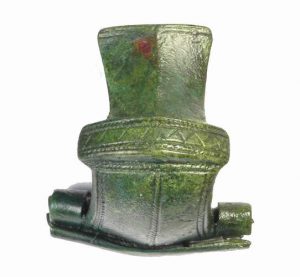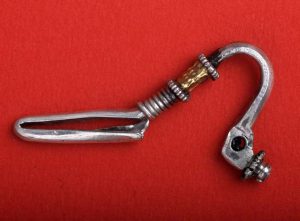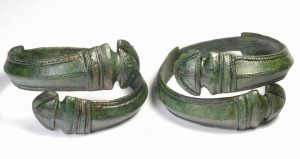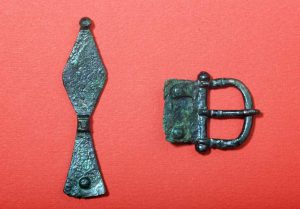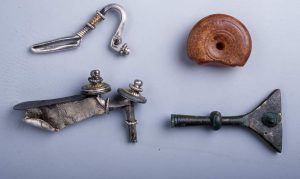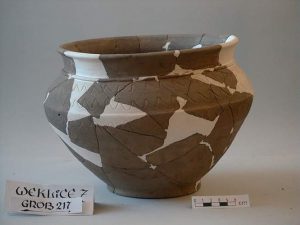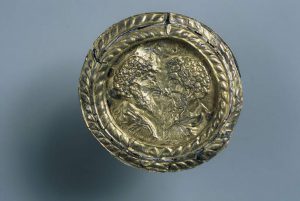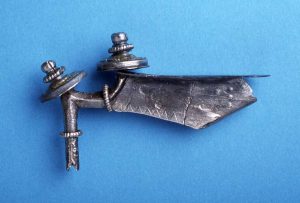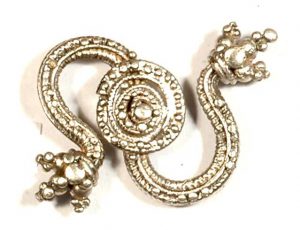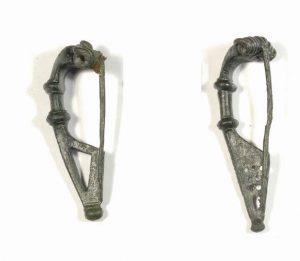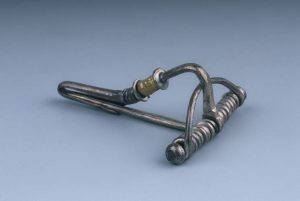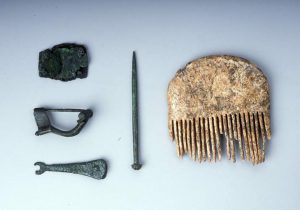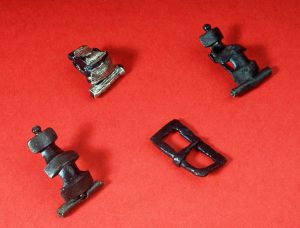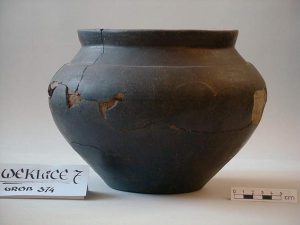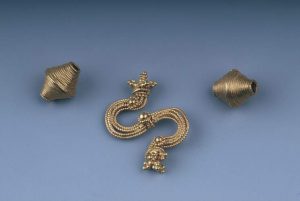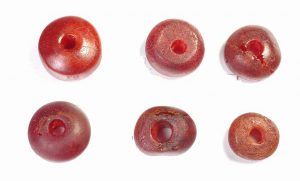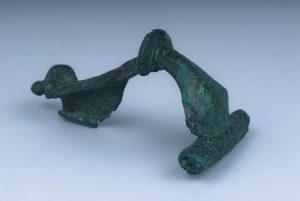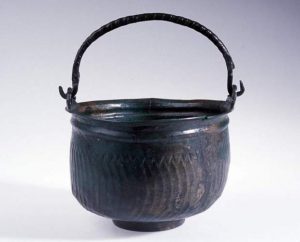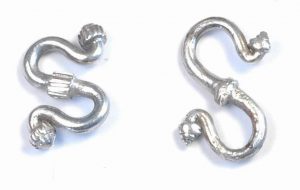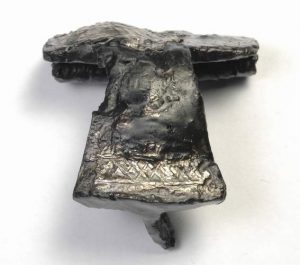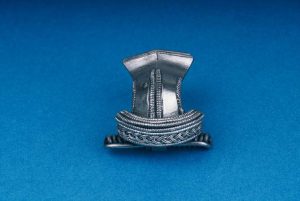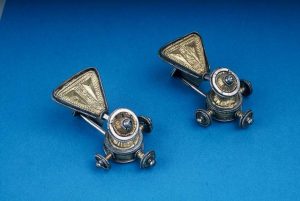AKTUALNOŚCI
From the first to the last Mycenaeans in the area of the Gulf of Volos (Thessaly)
Project information
Research project’s title: From the first to the last Mycenaeans in the area of the Gulf of Volos (Thessaly)
Project No: NCN 2020/38/E/HS3/00512
Project financing: Narodowe Centrum Nauki, konkurs SONATA BIS
Keywords: Mycenaean culture, Thessaly, Late Bronze Age, Aegean archaeology
Project lead: Bartłomiej Lis
Project lead, institutional: Institute of Archaeology and Ethnology of the Polish Academy of Sciences
Characteristics
The region of Thessaly, located in the northern part of Central Greece, for a long time has been considered as a periphery of the Late Bronze Age (1650-1050 BC) Greek Mainland, characterized by a culture that is referred to as Mycenaean. However, due to extraordinary discoveries over the last 30 years in its coastal part, in the area of the Gulf of Volos, this view is subject to dramatic change. These discoveries include a previously unknown administrative center at Dimini, otherwise famous for its Neolithic remains, the finding of two Linear B tablets at the site of Kastro Palaia in Volos, the first such written documents to be found north of Boeotia, and an industrial quarter at the site of Pefkakia, beyond the artificial tell that was considered to be the location of also Late Bronze Age settlement. This important research has attracted much of scholarly attention, and coastal Thessaly is now perceived more as a core Mycenaean area rather than a periphery.
This project will investigate how the societies of coastal part of Thessaly became fully Mycenaean, at least in terms of material culture remains accessible to archaeologists. This process was a gradual one, and was a result of both internal processes and external influences. The mechanisms of this change in material culture, so far poorly understood, are the main focus of this project. In order to shed light on them, the analysis will be conducted on multiple levels – starting from individual sites, through regional perspective including the interactions between the main settlements, to the relationships of coastal Thessaly with other regions. The hypothesis proposed here is that in the first stage of the process, the adoption of some elements of Mycenaean culture was the initiative of local elites that competed among themselves for power and prestige. In later times, the direct interest of palatial polities that formed in the south might have played a decisive role.
Two large components will contribute to answering the research questions of the project. One of them is the study of materials deriving from old excavations in the area, the other focuses on the site of Pefkakia and involves fieldwork with three excavation seasons. Material from old excavations includes predominantly pottery and its study will have two main aims – to establish precise relative chronology, necessary to reconstruct the interactions between settlements within coastal Thessaly, and to understand the contacts of Thessaly with other regions thanks to identification of imported pottery. This will be achieved through an application of several scientific analyses, combining non-destructive and destructive methods.
The site of Pefkakia, the focus of the second component, has the largest potential out of the three big sites in the area to reveal new information. Research conducted there so far revealed only a small portion of the site, and it may be that it is the largest one in coastal Thessaly, and not the smallest as believed so far. Another exciting perspective is the location of ancient harbour, since it is assumed that Pefkakia was a major port in the Late Bronze Age. It is clearly shown by numerous finds of large transport containers (stirrup jars, mostly from Crete) and single imports from as far as Near East. Geophysical and geoarchaeological investigation will be carried out to learn as much as possible about the site and its history before excavation starts in the most promising areas of the site. The investigations at Pefkakia will be a collaboration between the Institute of Archaeology and Ethnology, Polish Academy of Sciences, and the Ephorate of Antiquities of Magnesia, under the auspices of the newly established Polish Archaeological Institute at Athens.
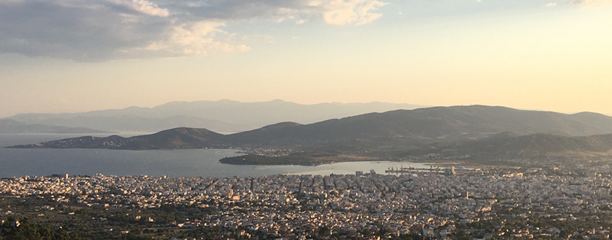
From waste to workshop
Project information
Project Title: From waste to workshop. Activity areas in settlements of the Pleszów-Modlnica Group of the Lengyel-Polgar Circle from the western Lesser Poland in the light of functional and spatial analyses of lithic artefacts
Project No.: NCN 2022/45/N/HS3/03475
Financed: National Science Centre, Poland, Preludium 21
Keywords: The Neolithic, the Pleszów-Modlnica Group, The Lengiel-Polgar Circle, lithic
analysis, use-wear analysis, intra-site analysis
Project lead: Tomasz Oberc
Project lead, institutional: Institute of Archaeology and Ethnology, Polish Academy of Sciences
email: toberc(et)iaepan.edu.pl, tomaszoberc(et)gmail.com
Characteristics
In the second half of 5th millennium BC in the western Lesser Poland a local variant of so called Lengyel-Polgar Circle (LPC) exist, known as Pleszów-Modlnica Group (PMG), with a division on older (Pleszów) and younger (Modlnica) phases. Most of basic characteristics, such as sedentarism, agriculture, general localisation, forms of settlements and houses, form and localisation of burials or rudimentary tool inventory of LPC are shared with model established by Linear Pottery Culture (ger. Linerabandkeramik, LBK) about a millennium earlier. At this time another set of changes in circulating styles of pottery, settlement and symbolic systems is observable in the area south of Carpathians, known as the Enelithization. Although some of the Eneolithic elements are visible in Lesser Poland only after 4000 BC, some of inferred economical changes included in ‘the Eneolithic package’, as a spread of flint mining techniques can be seen also in PMG. This process was also observed in changes the flint industry, and is thought to cause a shift in local settlement system.
A goal of the proposed project is to find patterns in work organisation within the settlements of Pleszów-Modlnica Group in Western Lesser Poland based on lithic implements, that would reflect economic choices of these societies. More detailed question concerns changes in these patterns between Pleszów and Modlnica phases of PMG. The hypothesis is, that the general model of activity around the household established at the beginning of Neolithic in area north of Carpathians by LBK people was kept, with some adaptations. The exact scope of these differences can be inferred by study of tasks achieved in settlements and subsequently checking how it fits in general model of Neolithic societies’. It is assumed, that the patterns of activity should be observed based on the sets of used lithic artefacts.
The work plan includes 4 stages of study. Firstly, an evaluation of materials and documentation from PMG sites will be made, resulting in ranking of 10 clusters of features most appropriate to planned analyses. During this task, 15 samples for radiocarbon dating will be selected, examined by specialists and send. Secondly, a use-wear analysis will be performed, enhanced by morphometric analyses and experimentation, to establish a way the lithic artefacts were used. Lithic artefacts selected for residue extraction and analysis will be chosen and send to the laboratories. The third task is a spatial and stratigraphic analysis of selected clusters of features. Aided with obtained radiocarbon data, models of deposition will be created based on catchment areas of features, with extraction of potential zones, where the artefacts have been used. Combination of these areas will be then constructed representing places, where specific tasks have been performed. Tasks – sets of simple activities performed on the specific material, such as hide tanning - will be contextualised in network model of processing of raw materials, and compared between sites to obtain generalised model of PMG economic behaviour. Detailed analysis will be conducted by comparison of spaces used for tasks in settlements. An interpretations will be made basing on known facts from other Neolithic sites, mainly of LPC, experimental and ethnographic data.
Lithic artefacts of PMG will be analysed with use of up-to-date protocols and equipment, that create an opportunity to reassess results obtained during earlier studies of this archaeological taxon. Obtained data on use of lithic artefacts will be supplemented with the zoological and botanical data, as well as residues analyses, resulting in multiproxy study of economic choices of the Neolithic societies. Analysis of chains of use and deposition, as well as conceptualisation of work division, will aid interpretation of PMG and Neolithic economic systems. This study is also set to shift the focus from lithic production to lithic usage and deposition. In doing so, it proposes dynamic work frame of use-wear analysis of Neolithic assemblages. As a result the “classic” Neolithic sites from the Lesser Poland area will be recontextualised, and provided with new radiocarbon determinations aiding understanding of reception of Eneolithization process in the periphery of the Central-European Neolithic ecumene.

Part of assembly from a grave of Pleszów-Modlnica Group from site 1 in Dziekanowice, Działoszyce Comm. (collection of Archaeological Laboratory IAE PAS in Igołomia)
Religion in (Post-)Socialist Societies
Project information
Research project’s title: Religion in (Post-)Socialist Societies
Funding: Center for Russian, East European and Eurasian Studies and University Center for International Studies of the University of Pittsburgh, the Eurasian Knot, Institute of Archaeology and Ethnology PAS
Project leader: Sean Guillory, Zuzanna Bogumił
Project host: Center for Russian, East European and Eurasian Studies, University of Pittsburgh https://www.ucis.pitt.edu/creees/religion-post-socialist-societies
Cooperating Institutions: Institute of Archaeology and Ethnology, Polish Academy of Sciences
Project objectives
Soviet ideology treated religion as an enemy, a tool of oppression and an expression of backwardness. Militant atheism, the prohibition of religious rituals, and the repression of religious communities aimed to create a secular, rational, and scientific society. Yet, religion mattered in Soviet people’s lives. And with institutional religion restricted, many people expressed their spirituality through “lived religion”—the practice of religion and spirituality in their everyday lives. What were the practices of lived religion in the context of state socialism? And how did it converge and diverge with the return of institutionalized religion and spiritual life after the collapse of communism?
This Spring 2023, the Center for Russian, Eurasian and East European Studies at the University of Pittsburgh in collaboration with Zuzanna Bogumil (Institute of Archaeology and Ethnology, Polish Academy of Sciences) is organizing an interview series Religion in (Post-)Socialist Societies. The events will explore the role of religion in socialist and post-socialist societies in eight online discussions on religion and its relations to repression, nation-building, indigenous cultures, and memory.
All events in this series will be held online.
Planned Events
FRIDAY, MARCH 17
Lived Religion in the Soviet Union
3:00 - 4:30 PM EST
A LIVE INTERVIEW WITH Catherine Wanner, Pennsylvania State University
THURSDAY, MARCH 30
Secret Police Archives as Depositories of Faith
12:00 - 1:30 PM EST
A LIVE INTERVIEW WITH Anca Șincan, Gheorghe Sincai Institute of the Romanian Academy AND Tatiana Vagramenko, University College Cork
THURSDAY, APRIL 6
Old Religion in the Making of the Modern Nation
12:00 - 1:30 PM EST
A LIVE INTERVIEW WITH Geneviève Zubrzycki, University of Michigan AND José Casanova, Georgetown University
THURSDAY, MAY 4
Lived Religions in China
9:00 - 10:30 AM EST
A LIVE INTERVIEW WITH Lap Yan Kung, Chinese University of Hong Kong AND Fenggang Yang, Perdue University
THURSDAY, MAY 11
Theology After Gulag
12:00 - 1:30 PM EST
A LIVE INTERVIEW WITH Katya Tolstoj, Vrije Universiteit Amsterdam
THURSDAY, MAY 25
Useable Pasts? Shamans, Spirituality and Resistance
12:00 - 1:30 PM EST
A LIVE INTERVIEW WITH Marjorie Mandelstam Balzer, Georgetown University
THURSDAY, JUNE 1
Islam, Repression, and Memory
12:00 - 1:30 PM EST
A LIVE INTERVIEW WITH Elmira Muratova, Aarhus Institute of Advanced Studies AND Michael Kemper, University of Amsterdam
Register on the events
https://www.ucis.pitt.edu/creees/religion-post-socialist-societies
All interviews will be available as the podcasts on the website of the Eurasian Knot https://euraknot.org
Crossing borders, building walls. Towards ethnography of Russian war mobilisation
Project information
Research project’s title: Crossing borders, building walls. Towards ethnography of Russian war mobilisation
Funding: Polish National Agency for Academic Exchange (NAWA) nr BPN/GIN/2022/1/00082/DEC/1
Dates: 16.01.2023-16.01.2024
Project leader: dr Zuzanna Bogumił
Project host: Institute of Archaeology and Ethnology of the Polish Academy of Sciences
Cooperating Institutions: University of Eastern Finland, Wydział Socjologii UW, Instytut Slawistyki PAN, Nazarbayev University, Ilia State University, Institute of Archaeology and Ethnology NAS RA, Bursa Uludağ University
Contact: e-mail: zbogumil(et)iaepan.edu.pl
Project objectives
The main goal of the project is to investigate the specificity of the migration wave related to mobilisation in Russia announced in September 2022 regarding the ongoing war in Ukraine. Project puts a particular focus on establishing: how do migrants explain their decision to flee from mobilisation? How do they explain the mobilisation? To what extent do they perceive the migration as an individual, social and political act? The project recognizes that the mobilisation is a new pushing factor in the contemporary European and World’s migration crisis, and therefore it requires a separated academic reflection. Moreover, since February 2022, there has been a clear and dynamic increase in the number of Russian diasporas in Europe and around the world, and their status and role require investigation. We therefore focus on Russian migration of mobilisation in order to establish how it fits into the debates about the humanitarian crisis, what are its particular features and how mobilisation as a pushing factor affects the current migration landscape. Within the framework of the project in 8 selected countries - Poland, Finland, Estonia, Georgia, Armenia, Turkey, Kazakhstan and Mongolia - we aim to conduct in-depth interviews (IDI) each with migrants/refugees/fugitives/conscientious objectors of Russian citizenship from different social strata and ethnic groups who crossed the border after the announcement of partial mobilisation in their country. As a supplementary methods we use participant observation and critical discourse analysis (CDA), essential for contextualising this wave of migration in particular countries.
The project involves conducting interviews with people in the migration crisis, which is why we attach great importance to the methodology, ethics, safety of research and securing the collected data. The ethical principles of the project "Crossing borders, building walls" are based on the universal principle of respect for human rights. In the protection and processing of personal data, we follow the principles contained in Regulation 2016/679 - Protection of natural persons with regard to the processing of personal data and on the free movement of such data, and repealing Directive 95/46/EC (General Data Protection Regulation ), and relevant documents applicable to our partners from outside the EU whose countries have not adopted Regulation 2016/679.
Events
Online seminars
Crossing Borders, Building Walls: Implications of the Russian Wars
October, 18 2023 at 9.00 – 10.30am CEST
Florian Mühlfried (Ilia State University), Between Hospitality and Hostility: Russian Citizens in Georgia
My presentation will be divided into two parts. In the first part, I differentiate groups of Russian relokanty to Georgia and emphasise the double discrimination of people from the North Caucasus. In the second part, I will talk about my current research project on encounters of Georgian and Russian hipsters in Tbilisi.
December, 6 2023 at 9.00 – 10.30am CET
Bella Ostromooukhova (Sorbonne University), Children book professionnals between Russia and Exile
My presentation will focus on migration in Russian children's publishing. I will analyze the various ways of cutting ties and maintaining contact with the professional milieu in Russia, and of recomposing networks in exile. I will also examine the positionnings of players in the children's book market in relation to the war in Ukraine and the repressive policies of the Russian government.
February, 7 2023 at 9.00 – 10.30am CET
Nvard Melkonyan (Yerevan State University) and Yuliana Melkumyan (Yerevan State University), Russian relocants in Armenia: the impact of Russian-Ukrainian war
Our presentation will focus on Russians, who relocated their families and businesses to Armenia because of the war outbreak in Ukraine in February 2022. We will analyse the pull and push factors forcing their migration, the patterns of integration in Armenian society and segregation risks. The special emphasize will be on the analysis of the situation, when people flee their own country due to war and settle in a country, which is also in the situation of war.
International Academic Conference
(In)Visible Russian (Anti-)War Migration
March 13-15, 2024, Warsaw
The full-scale aggression of the Russian state against Ukraine on February 24, 2022 triggered new migration, refugee, humanitarian and political crises in European and Asian countries. Russia's aggression forced Ukrainians to flee from the war, but also pushed Russians to leave their country en masse. Russian (anti-)war migrants are people of various social, religious and national backgrounds with different views and attitudes towards Putin’s regime. Their migration affects not only the migrants themselves and the host societies, but also the broader situation in Russia itself. The conference will provide a platform for discussion among researchers from various disciplines and academic backgrounds to approach various dimensions of the Russian (anti-)war migration and investigate responses to it on micro-, meso- and macro- levels.
Conference materials:
CfP
Conference programme
Conference poster

Project team

Mustafa Berkay Aydın with a bachelor's degree in Sociology (Ankara University, Ankara, Turkey) and he obtained PhD (2015) in Sociology (Middle East Technical University, Ankara, Turkey). Now, he works as Assoc. Prof. at Bursa Uludağ University Department of Sociology, Bursa/Turkey. He is interesting in digital sociology, sociology of sport, applied sociology, political sociology, migration and sociology of work. He has published some publications in these areas. He conducts researches at Turkey, on the other hand he was at different countries and universities as a visiting reseacrher at his academic process in a various times such as University of Kent (UK), London Metropolitan University (UK) and Stockholm University (Sweden). Detailed Infırmation: https://avesis.uludag.edu.tr/berkayaydin, email: berkayaydin(et)uludag.edu.tr)
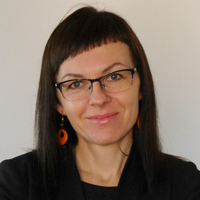
Zuzanna Bogumił (project coordinator) is cultural anthropologist, working at the Institute of Archeology and Ethnology, Polish Academy of Sciences. She specializes in memory studies, museum studies and anthropology of religion. Bogumił is an author, co-author or co-editor of several books, among them: Gulag Memories: The Rediscovery and Commemoration of Russia's Repressive Past (Berghan Books 2018), Milieux de mémoire in Late Modernity. Local Communities, Religion and Historical Politics (Peter Lang 2019). Memory and Religion from a Postsecular Perspective (Routledge 2022). She currently coordinates several projects among them project Post-secular approach to memory processes in Central-Eastern Europe sponsored by Visegrad Found.
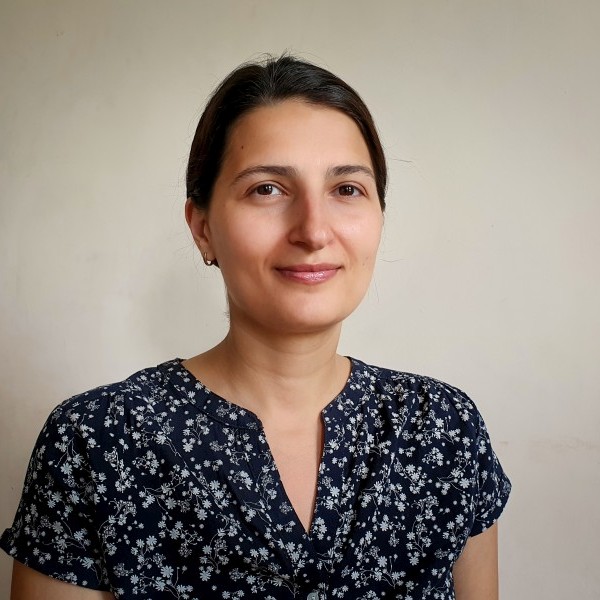
Mariam Darchiashvili is an Assistant-Professor in social and cultural anthropology at Ilia State University, Georgia. Her research interest includes migration and mobilities, informality, and economic and legal anthropology. As a researcher, she has been involved in the following scientific projects: ‘Religiosity among young Georgians’ (2015-2018); ‘Infrastructure and Narratives: Black Sea Networks’ (2018-2019); ‘Surrogacy as Networked Phenomenon: the study of key actors and their interrelations’ (2020-2023), ‘Death in migration: perspectives from the post-Soviet space’ (2021-2022). Her articles have appeared in Nationalities Papers, Journal of Religion in Europe, and Revue Européenne des Migrations Internationales (REMI).
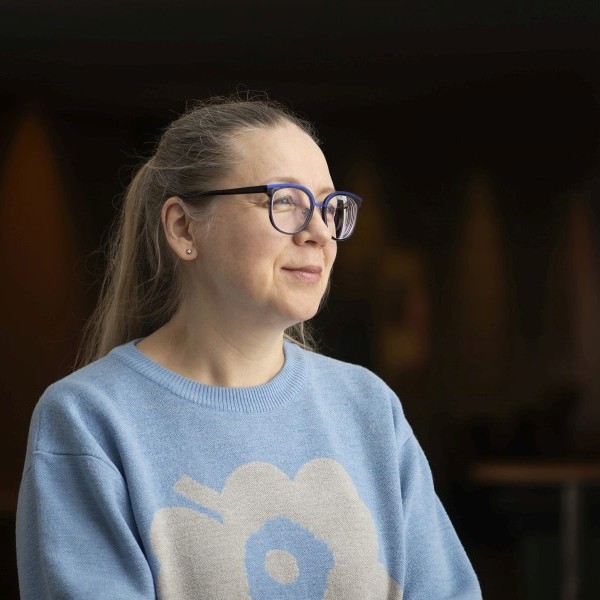
Olga Davydova-Minguet, PhD in ethnology, holds a professorship in Russian and border studies at the Karelian Institute of the university of Eastern Finland. Davydova-Minguet’s main research interests fall within the intersections of migration, cultural, gender and transnational studies. She has studied immigration of Russian speakers to Finland since the beginning of 2000s. With her research group, recently she has conducted research projects focusing on transnational politics of memory in the border areas of Finland and Russia, media use of Russian speakers in Finland, and perceptions of Russia in Finnish border areas among different population groups. Her current Finnish Academy’s funded research project delves into death practices among Russian-speaking immigrants in Eastern Finland, and into the meanings of death in memory politics in bordering Republic of Karelia in Russia and Eastern Finland.
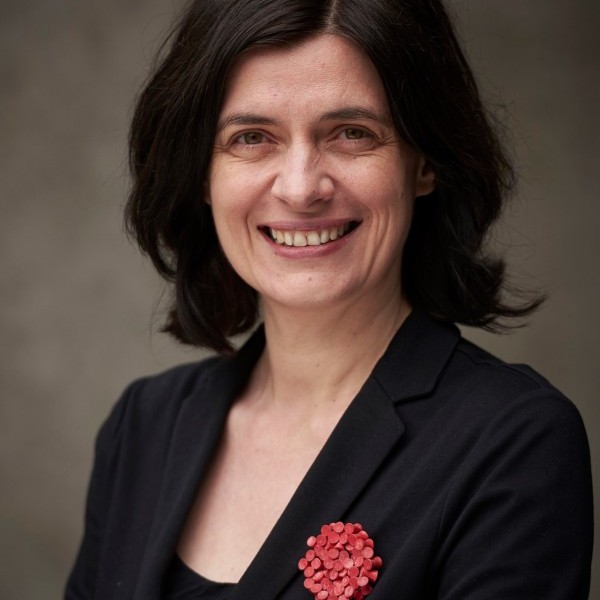
Ketevan Gurchiani is a professor of anthropology at Ilia State University in Tbilisi, Georgia. She is particularly interested in lived religion, the domesticated and undomesticated nature of the city, and informal practices of resistance. Since 2020, Ketevan Gurchiani has been leading the project: "Tbilisi as an Urban Assemblage" (https://urbanassemblage.iliauni.edu.ge). In this project she is interested in different aspects of the intertwining of human and non-human in the city. Ketevan Gurchiani is also involved in the projects "An Anthropology of Gardens Otherwise and Elsewhere", "Surrogacy as Networked Phenomenon", and “Conflict and Cooperation in Eastern Europe”. Webpage https://faculty.iliauni.edu.ge/arts/ketevan-gurchiani/?lang=en
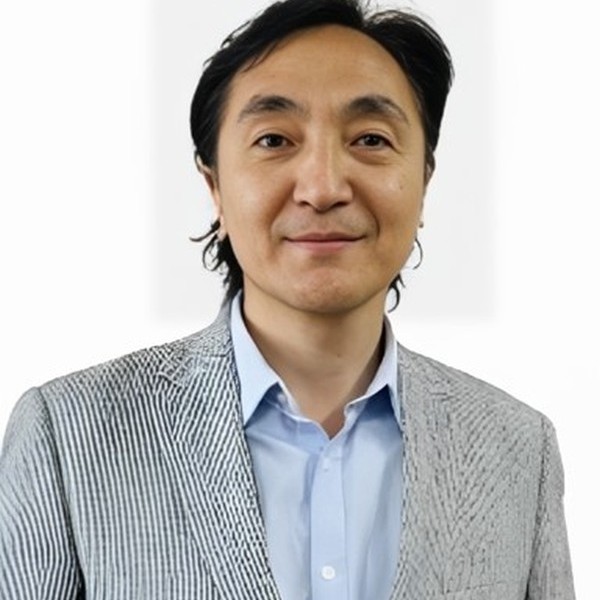
Byambabaatar Ichinkhorloo PhD is the head of the Challenge Local Development Research Institute in Mongolia and a senior lecturer at the Department of Anthropology and Archaeology, National University of Mongolia. Previously, he worked as a lecturer at the University of Zurich and a co-investigator of "Gobi Framework" research project at the University of Oxford. As a social anthropologist, Byamba is studying how people make a living in Mongolia since 1990. His earlier research focused on social networks, pastoralism, and political economy and ecology. Recently, he studies nomadic cultures, state policies, and mining impacts in Inner Asia. His latest publication includes the "Impact of Mining Lifecycles in Mongolia and Kyrgyzstan: Political, Social, Environmental and Cultural Contexts."
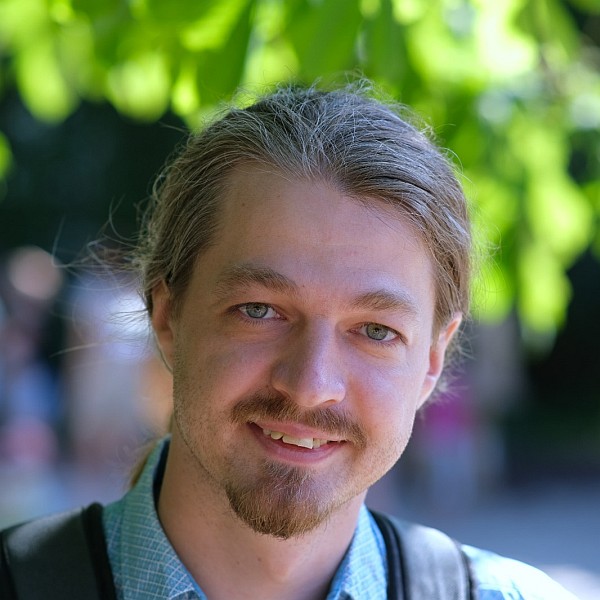
Alexander Makhov is a PhD student at the Graduate School for Social Research (The Polish Academy of Science). He studies the impact of state memory politics on academic history in Putin's Russia. His research interest includes non-democratic politics of identity and academic freedoms in illiberal regimes with a focus on social sciences and humanities.
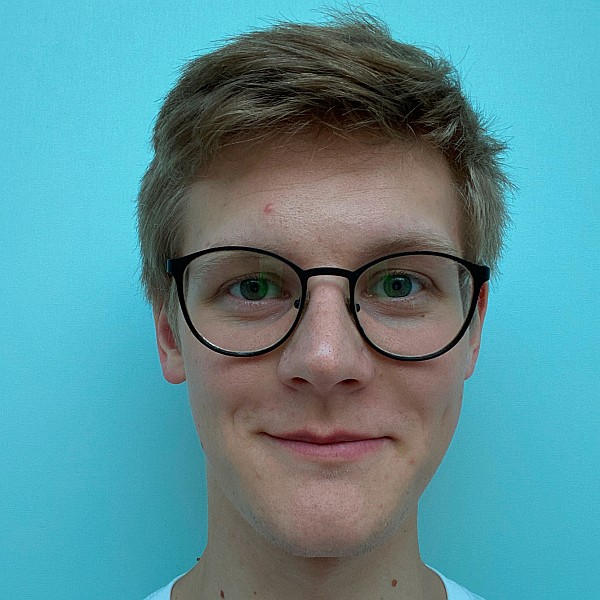
Nikita Mishakov is a PhD student at the Eurasian Studies program, Nazarbayev University, (Astana, Kazakhstan). His research area are migration and border studies, bureaucracy studies and economic sociology. His last project focused on street-level bureaucracies in public Russian social services, emphasizing citizen classification and paperwork's role. His current project focuses on migration patterns from Russia to Kazakhstan after the announcement of partial mobilization by Vladimir Putin in September 2022.
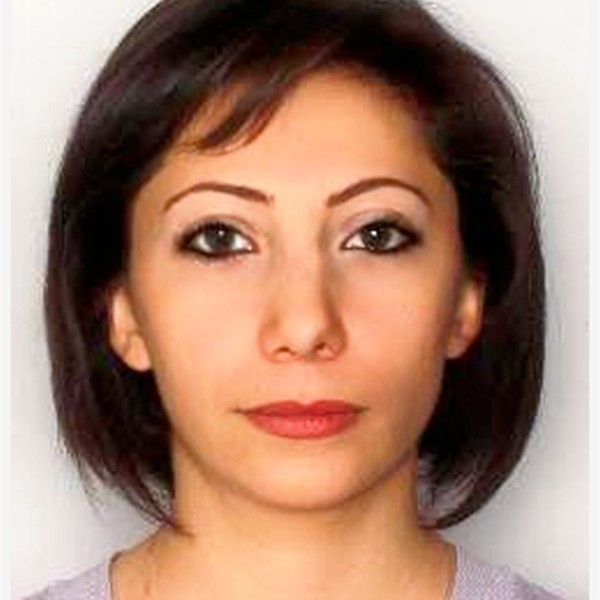
Sona Nersisyan received PhD degree in history and ethnology at the Institute of Archeology and Ethnography NAS RA. I am a senior researcher at the Department of Diaspora Studies at the same Institute. Also, I have an experience of working as a lecturer at the Armenian State Pedagogical University, and Scientific Advisor to the Director of National Institute of Labor and Social Research by Ministry of Labor and Social Affairs of RA.I managed and participated in the international and state research projects in different fields, which include migration, diaspora studies, repatriation studies, social network analysis, investment and socio-economic studies.
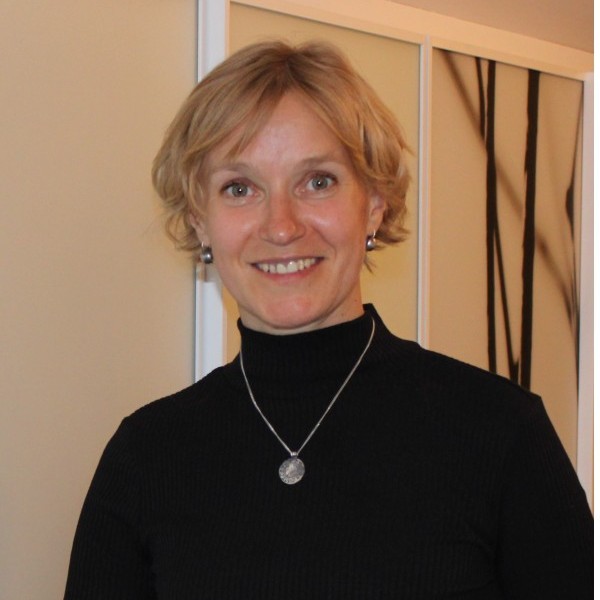
Raili Nugin is a sociologist, working at the School of Humanities, Tallinn University. During her academic career she has studied transition to adulthood, generational conceptualisation, youth mobilities, rural youth, rural-urban relations, memory transmission and social exclusion. Within her different research projects (international and national), she has also studied Russian ethnic minorities in Estonia and recently, Ukrainian refugees in the context of rural-urban networks. She has authored several research articles in different journals (Memory Studies, Journal of Youth Studies, Journal of Rural Studies, Sociologia Ruralis), edited a book about generations (“Generations in Estonia: Contemporary Perspectives on Turbulent Times,” Tartu University 2015) and written a monograph about the generation born in the 1970s (“The 1970s: Portrait of a Generation at the Doorstep,” Tartu University 2015).
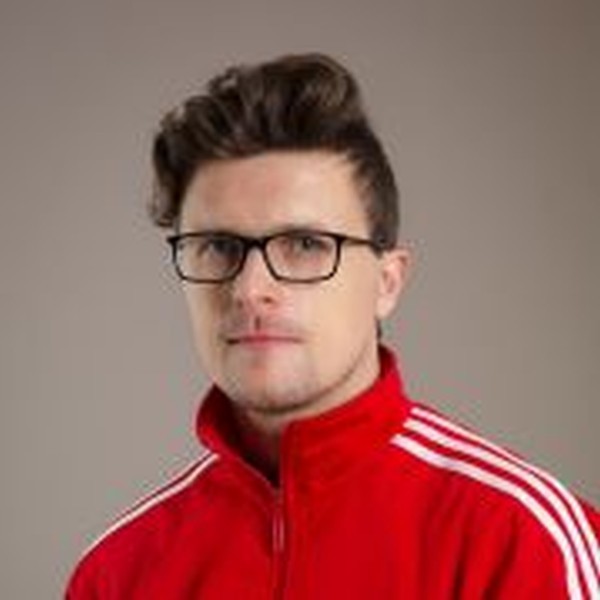
Tomasz Rawski is a political and cultural sociologist focused on researching memory politics, nationalism/war and state socialism in contemporary Eastern Europe and beyond. He authored a book on Bosniak nationalism in Bosnia and Herzegovina after 1995 and several articles in renowned journals, including East European Politics and Societies, International Journal of Comparative Sociology and Problems of Post-Communism. He participated in research projects focused on memory politics, including H2020: REPAST and H2020: DisTerrMem. He was a visiting scholar at University College London, Uppsala University and University of Sarajevo.
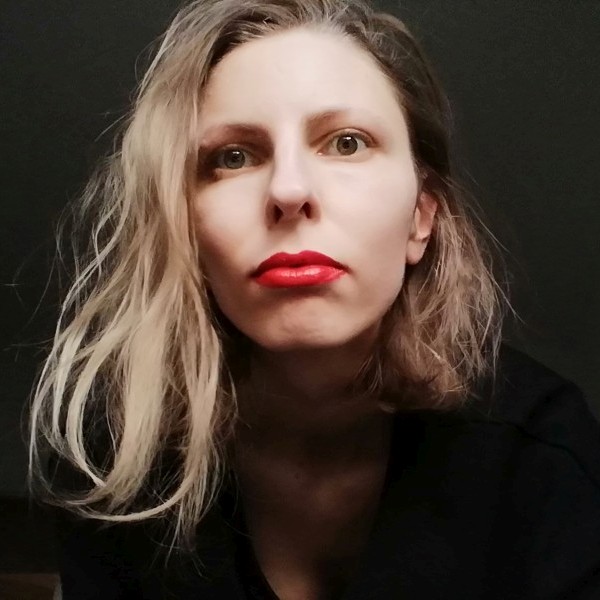
Katarzyna Roman-Rawska, assistant professor at the Institute of Slavic Studies of the Polish Academy of Sciences. Literary scholar, sociologist, publicist and literary translator. She works on the intersection of culture and politics as well as anti-regime and anti-war resistance in contemporary Russia. https://pan-pl.academia.edu/KatarzynaRomanRawska
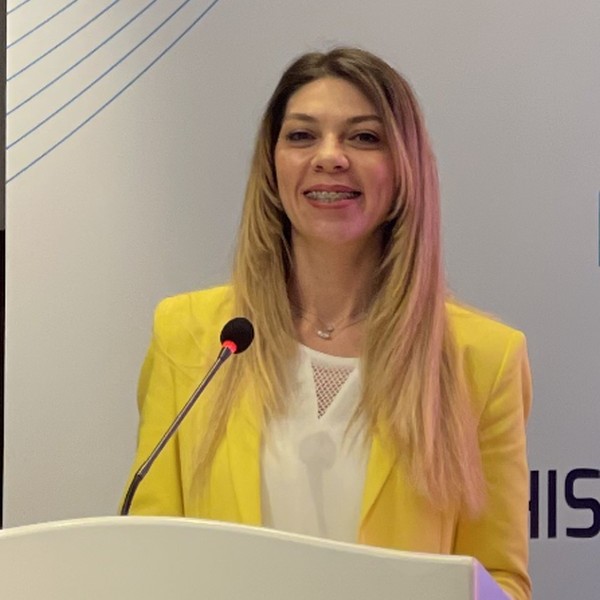
Tamilla Şahin is a PhD student at the Bursa Uludag University, Department of Labour Economics and Industrial Relations. At the same time, I am continuing my doctoral education as project assistant in Priority Migration area within the YÖK 100 / 2000 program. My research interests include immigration, Meskhetian Turks and their social issues.
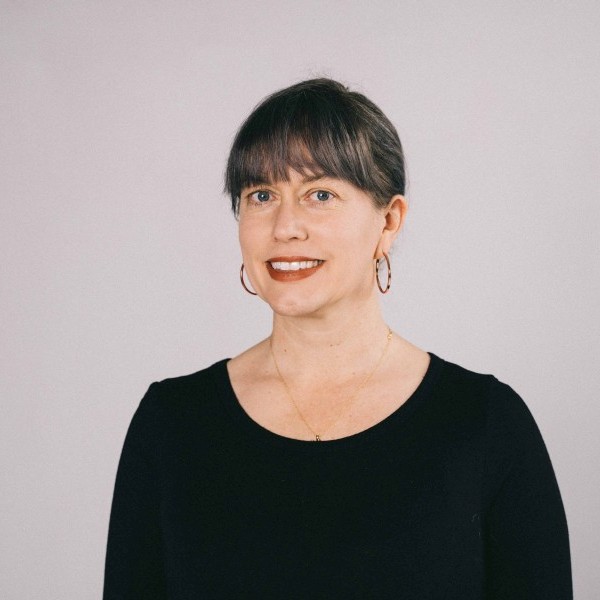
Caress Schenk is an Associate Professor of political science at Nazarbayev University (Astana, Kazakhstan) with teaching and research expertise in the politics of immigration and national identity in Eurasia. Her new book, published with the University of Toronto Press, is called Why Control Immigration? Strategic Uses of Migration Management in Russia. Current and previous research has been funded by the American Councils for International Education, Nazarbayev University and the Fulbright Scholar Program and has been published in Demokratizatisya, Europe-Asia Studies, and Nationalities Papers, and in edited volumes published by Edinburgh University Press and Oxford University Press. Dr. Schenk is a member of the Program on New Approaches to Research and Security in Eurasia (PONARS Eurasia).
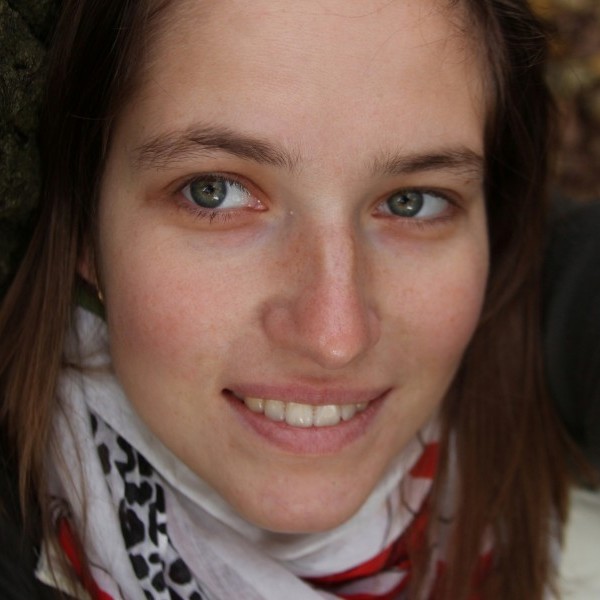
Anna Sokolova is a Kone Foundation Fellow at the Helsinki Collegium for Advanced Studies (University of Helsinki). Her previous research was related to Soviet death and funeral culture, which resulted in the book “A New Death for a New Man? Funeral Culture in the Early Soviet Union” (2022, in Russian). Her current project tends to reveal everyday life in timber production workers’ settlement of late Soviet Karelia.
Project partners

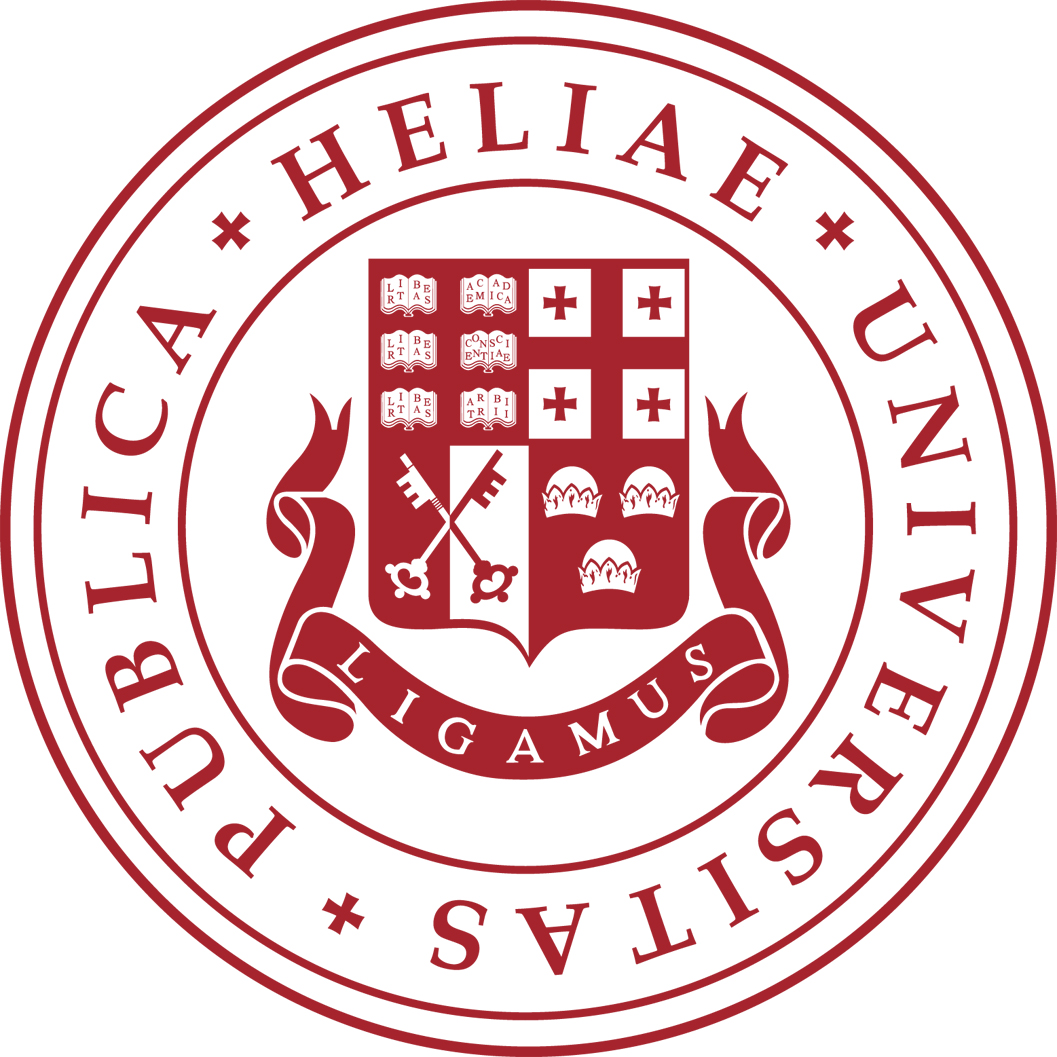
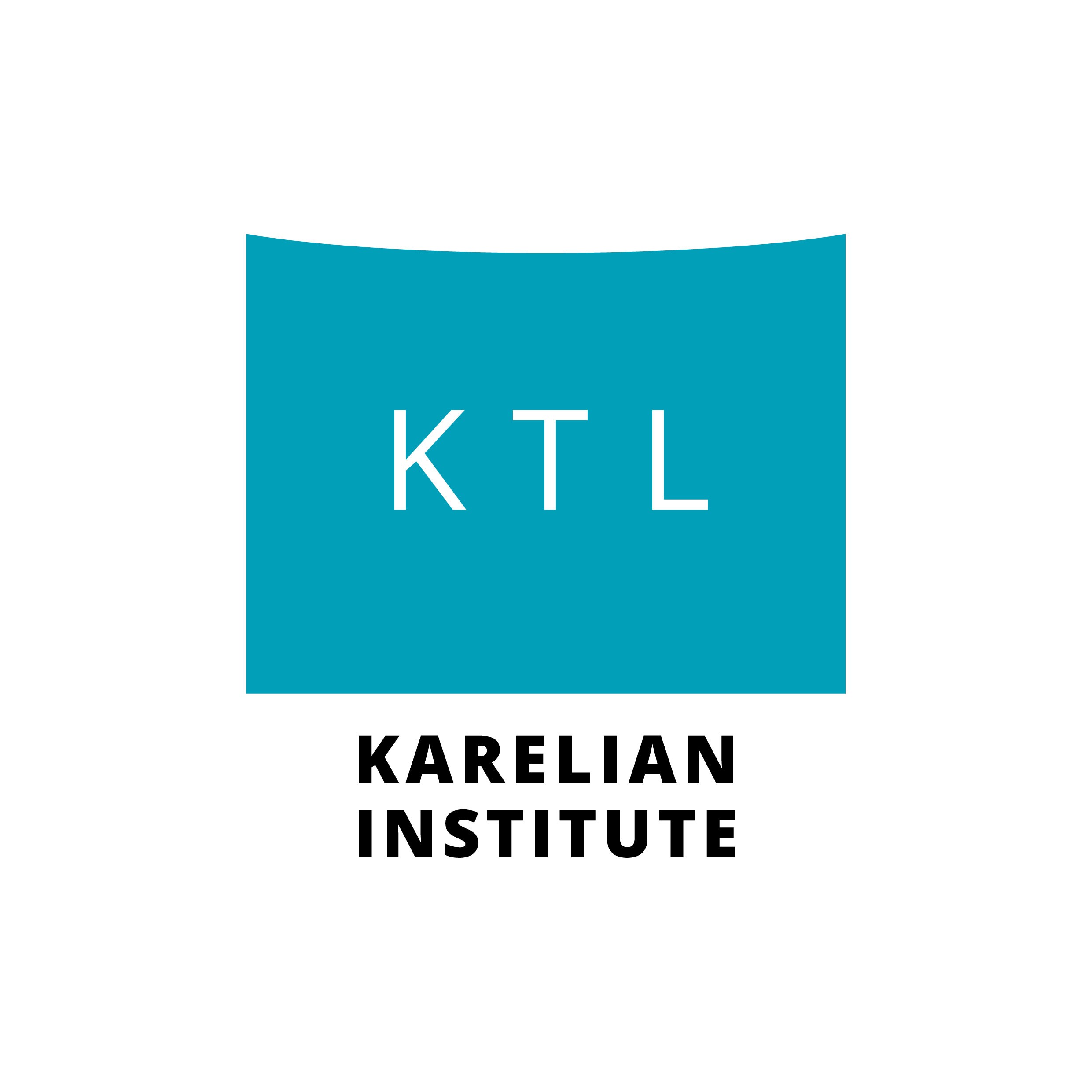


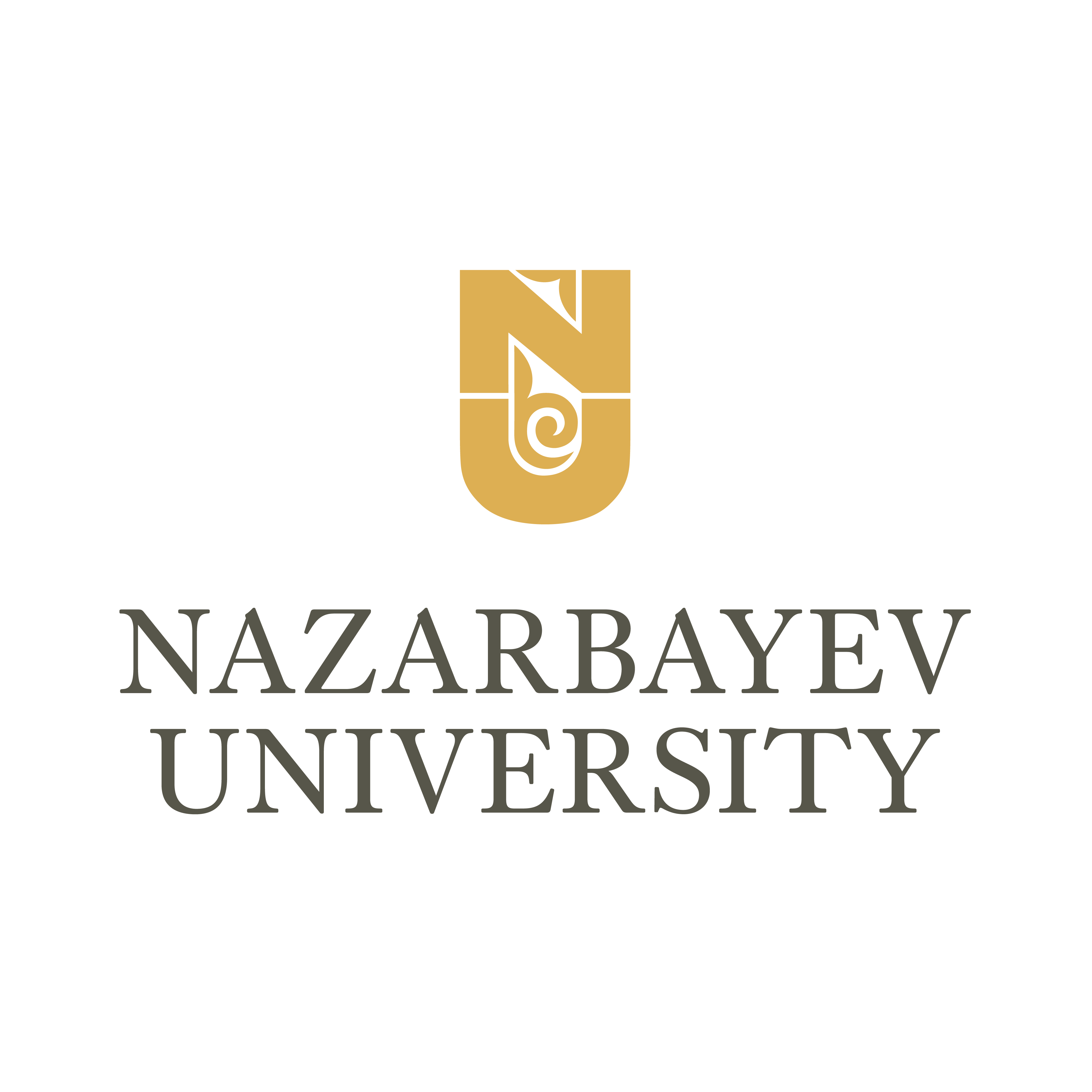
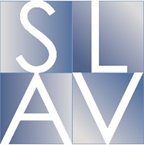
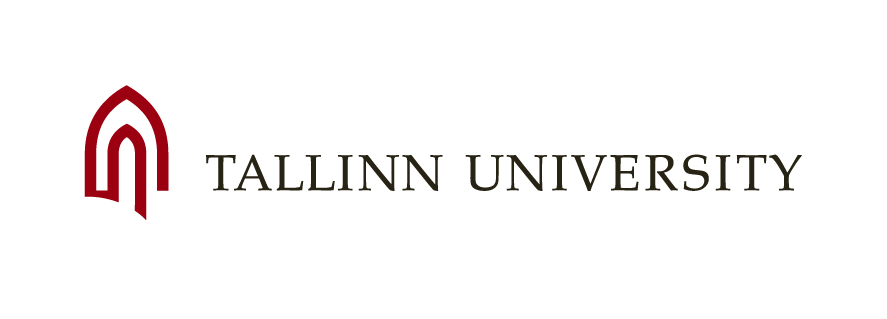


Post-secular approach to memory processes in Central-Eastern Europe
Project information
Research project’s title: Post-secular approach to memory processes in Central-Eastern Europe
Funding: The project is financed by the Governments of Czechia, Hungary, Poland and Slovakia through Visegrad Grants from International Visegrad Fund ID 22230096
Dates: 01/03/2023 – 31/08/2024
Project leader: dr Zuzanna Bogumił
Project host: Institute of Archaeology and Ethnology of the Polish Academy of Sciences
Cooperating Institutions: Charles University, Slovak Academy of Sciences, Moholy-Nagy University of Art and Design, National University of Kyiv-Mohyla Academy
Contact: e-mail: zbogumil(at)iaepan.edu.pl
Project objectives
There is a lack of understanding and appreciation of the subtle and diverse connections between memory and religion. Religion is often reduced to a tool of the national politics of memory. Religious memory is perceived as an inner phenomenon of a religious group, and the influences of religion on secular memory are thereby ignored. This project aims to fill this gap by gathering a team of researchers from different academic fields to discuss various relationships between religion and memory and to conceptualize exiting interdependencies of institutionalized churches, vernacular religious communities, authorities, and civil society in the process of memory production in the V4+ countries.
By focusing on the selected countries of the region and various Christian denominations, our research group will jointly conceptualize post-secular memory for its applicability to the CEE societies. We will also discuss implementation of the elaborated post-secular concepts in specific empirical cases, which each of the project participants are expected to work on individually. These individual cases will focus on different aspects of memory development, such as gender influence, materiality of memory, and memory politics.
Planned events
Kick-off meeting (March 2023, online)
One-day online research meeting bringing the partners together to meet each other and elaborate a detailed research working plan. The meeting is organized by Polish partner.
Regular online meetings (March 2023 – June 2024, online)
We organize one working seminar each month to discuss selected articles and books, existing concepts of postsecularity and establish what we understand by postsecular approach to memory processes in Visegrad region.
Workshop, Bratislava (20 – 23 September 2023, in person)
3-days workshop in Bratislava brought together team partners who discussed ongoing achievements of the project. During this workshop, we focused on the frame of the concepts of post-secular memory that we plan to apply to memory processes in Visegrad region. We had a postsecular walk in Bratislava made by Agáta Šústová Drelová. Later, each team member presented its individual project.

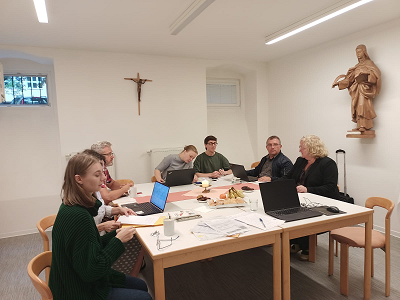
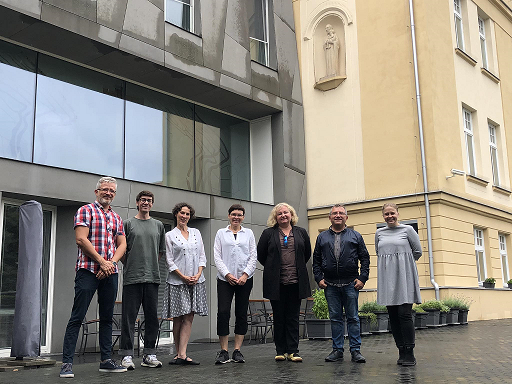
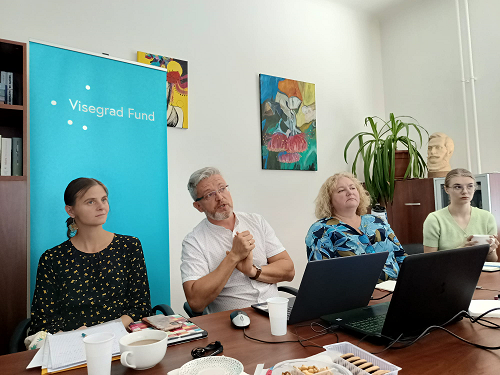
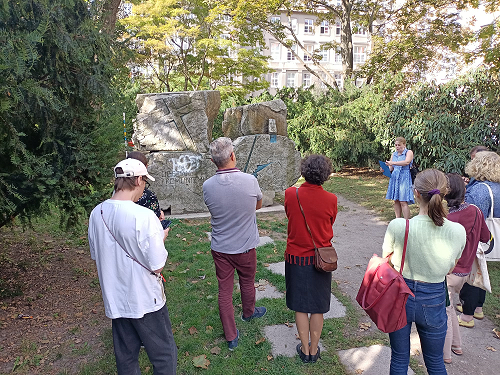
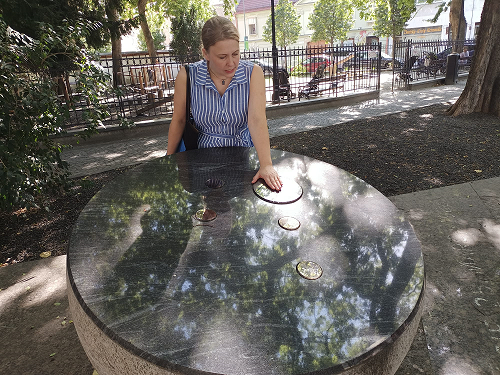
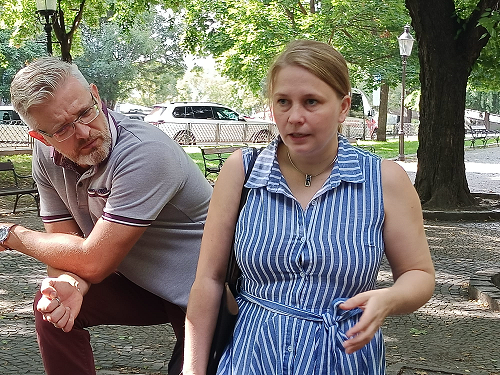
Workshop, Prague (31/01 – 02/02 January 2024, in person)
Two-day workshop brought together team members who discussed ongoing achievements of the project. Alessandro Testa, an anthropologist of religion invited participants on the postsecular walk in Prague. All team members actively engaged in works on our book proposal "Toward post-secular memory studies". They presented the drafts of their future book chapters.
PROGRAM
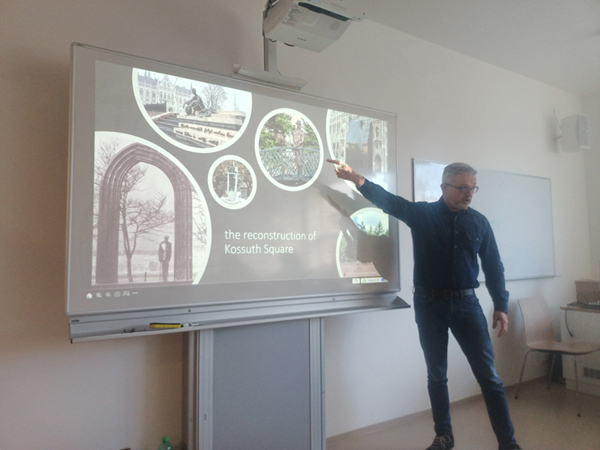
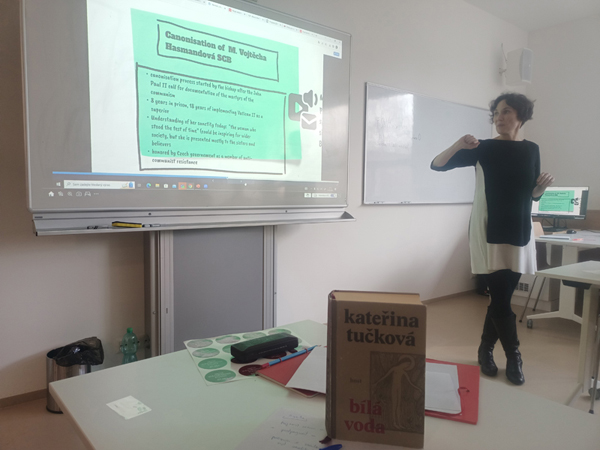
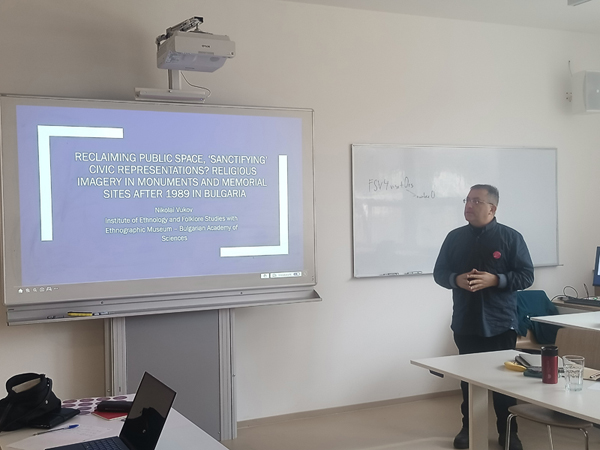
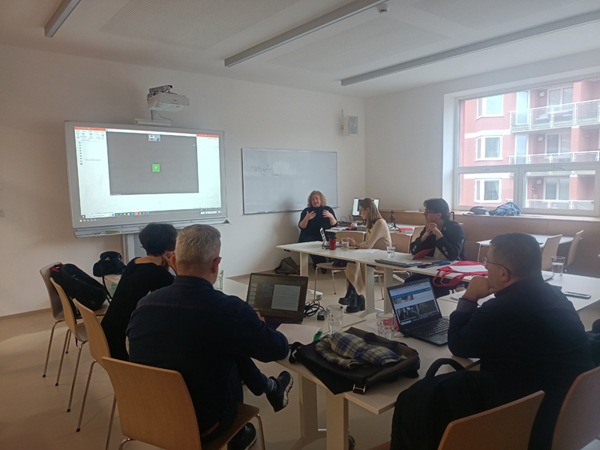
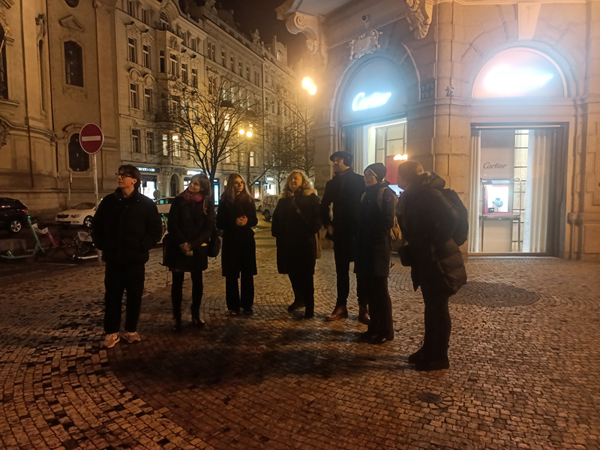
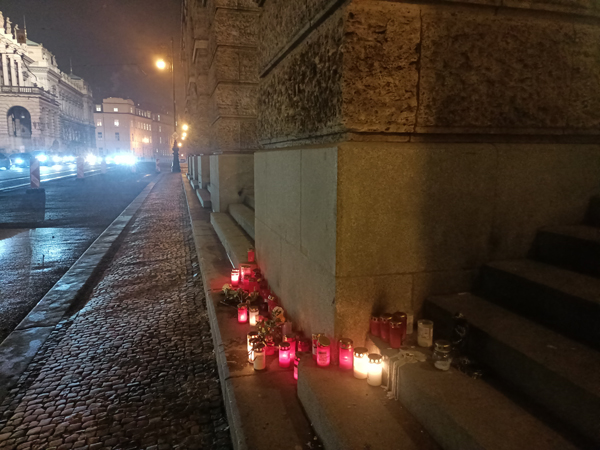
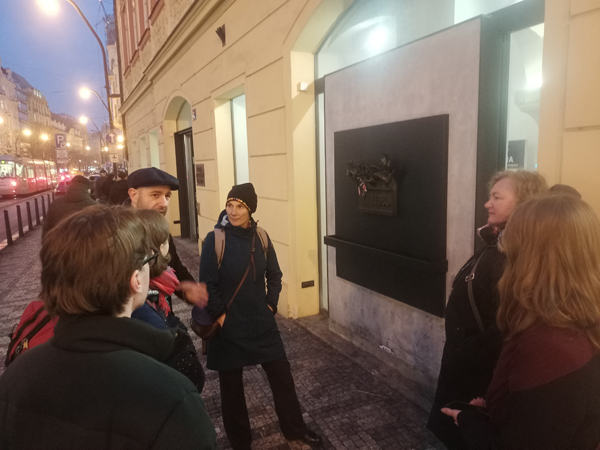
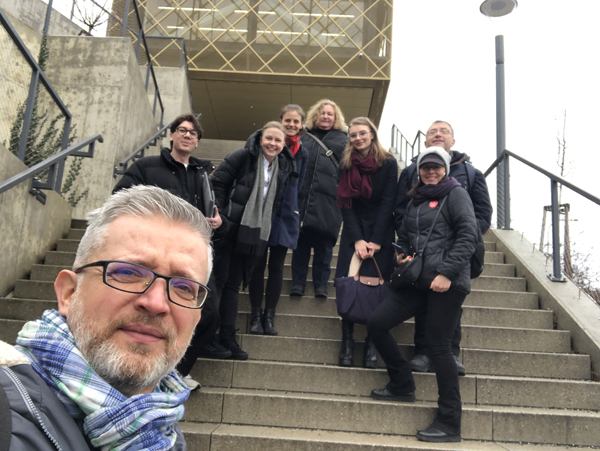
Conference, Warsaw (13-15 June 2024, hybrid)

Three-days hybrid conference entitled “Remembrance, Religion and Secularity in Central and Eastern Europe and beyond” which aims to discuss how religion mobilizes and is mobilized in memory work, and how it affects remembrance processes in Central and Eastern Europe. It also aims to share project results with wider public. Apart of the panel sessions, two plenary sessions are planned: “Memory and Post-secularism” and “Memory and Religion in Central and Eastern Europe”. The conference will be preceded by pre-conference masterclasses for MA and PhD students on June 12, 2024.
CALL FOR PAPERS
Project team
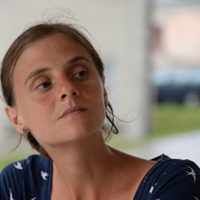
Kamila Baraniecka-Olszewska works in the Institute of Archaeology and Ethnology of Polish Academy of Sciences. She studied ethnology and Latin American studies. Her main areas of interest are the anthropology of religion and performance studies, and in particular forms of religious expression. She received her habilitation in 2019. She is the author of articles on contemporary religiosity, historical reenactments and of the books: The Crucified: Contemporary Passion Plays in Poland (De Gruyter, 2017) and World War II Historical Reenactment in Poland: The Practice of Authenticity (Routledge, 2021). She realizes a project funded by National Science Centre Poland Ambient History: Anthropological Study of Participation in Historical Performances in Poland and participates in a grant funded by Visegrad Fund Post-secular approach to memory processes in Central-Eastern Europe.

Zuzanna Bogumił is cultural anthropologist, working at the Institute of Archeology and Ethnology, Polish Academy of Sciences. She specializes in memory studies, museum studies and anthropology of religion. For last few years Bogumił worked on the religious memory of Soviet repressions in Russia and coordinated the project sponsored by the Polish National Science Centre, “From Enemy to Martyr”. She also conducted research on the historical exhibitions in the Church’s crypts. Bogumił is an author, co-author or co-editor of several books, among them: Gulag Memories: The Rediscovery and Commemoration of Russia's Repressive Past (Berghan Books 2018), Milieux de mémoire in Late Modernity. Local Communities, Religion and Historical Politics (Peter Lang 2019). Memory and Religion from a Postsecular Perspective (Routledge 2022). Her articles have appeared in Europa-Asia Studies, Religion, State and Society, East European Politics and Societies.
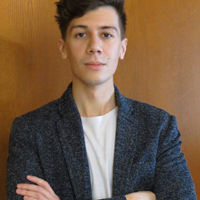
Andriy Fert is a PhD candidate in history at the National University of Kyiv-Mohyla Academy in Ukraine. He currently completes his dissertation dedicated to state control of Orthodox Christian communities of Kyiv in the 1970s-1980s. He studies the interplay between religion, nationalism, and memory, and the role of Churches in memory politics. His publications include “Equivocal Memory: What does the Ukrainian Orthodox Church of the Moscow Patriarchate Remember?” in Religion During the Russian-Ukrainian Conflict (2020) and "‘How could we possibly forget this?’: Ukrainian Orthodox Churches and the Soviet Past during the War" (forthcoming in 2023). Andriy also coordinates several educational projects for secondary school history teachers and studies the impact of the Russian invasion on the Ukrainian Orthodox Church of the Moscow Patriarchate
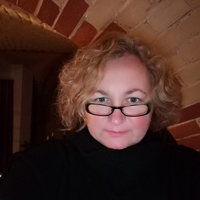
Agnieszka Halemba (PhD 2003 Cambridge) is a social anthropologists working at the Institute of Archaeology and Ethnology of the Polish Academy of Sciences and teaching at the University of Potsdam. She focuses on the anthropology of religion, with long-term field research conducted in southern Siberia and Transcarpathian Ukraine. Since 2016, she conducts research on the significance of religious architecture in secular contexts based on fieldwork in eastern parts of Germany. She is also a head of the Anthropology Undisciplined Research Unit, which focuses on development of innovative methodologies for interdisciplinary research and an author of two ethnography-based monographs: Negotiating Marian Apparitions: The Politics of Religion in Transcarpathian Ukraine (Central European University Press 2015) and The Telengits of Southern Siberia: Landscape, Religion and Knowledge in Motion (Routledge 2006).
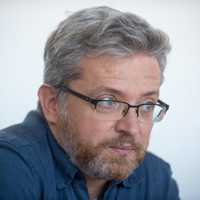
István Povedák has an MA in European Ethnology, History, and Religious Studies from the University of Szeged. He obtained his PhD in Folklore and Cultural Anthropology from the Eötvös Lóránd University of Budapest, in 2009, and received his habilitation in art theory from the Moholy-Nagy University of Art and Design (MOME), Budapest. His research fields include modern mythologies, celebrity culture, conspiracy theories, UFO culture, religious neo-nationalism, ethnic paganism, and Romani culture in Hungary. He is the president of the Hungarian Cultural Anthropology Association. Povedák was the chair of SIEF (International Society for Ethnology and Folklore) Ethnology of Religion Working Group between 2013 and 2019. He has been a guest lecturer at many universities including the Ohio State University, the University of Oregon, and the University of Riga. As a senior researcher he used to work for the Hungarian Academy of Arts, and Charles University in Prague. Since 2018 Povedák is an associated professor at the Institute for Theoretical Studies, MOME.

Barbora Spalová has studied ethnology and social anthropology in Prague. She does research in the field of anthropology of religion, particularly the anthropology of Christianity. She is also involved in border studies and memory studies. She lives in the Czech-Polish-German borderland. She is the editor-in-chief of the journal for qualitative research Biograf.
https://cuni.academia.edu/BarboraSpalov%C3%A1
https://cirkev.fss.muni.cz/
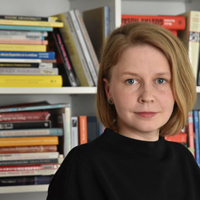
Agáta Šústová Drelová is a contemporary history researcher at the Institute of History, Slovak Academy of Sciences and an author of weekly history podcast at Slovak daily SME. She is the author of several articles and book chapters focusing on religion, national identity and nationalism in late socialist and early post-socialist Czechoslovakia. A University of Exeter and St Andrews graduate, she has been the beneficiary of a number of scholarships including research fellowship at the Imre Kertész Kolleg in Jena. Currently she divides her time between her two children, research and popularisation of history. Within the Post-secular approach to memory processes in Central-Eastern Europe project she will explore the nexus of gender and national identity within post-war Catholic memory in Slovakia.

Nikolai Vukov is Associate Professor at the Institute of Ethnology and Folklore Studies with Ethnographic Museum at the Bulgarian Academy of Sciences (IEFSEM – BAS), and Visiting Lecturer in cultural history and social anthropology at Sofia University “St. Kliment Ohridski” and “Paisiy Hilendarski” University of Plovdiv. He has a Ph.D. in anthropology and folklore studies (2002 – Bulgarian Academy of Sciences) and a Ph.D. in modern history (2005 – Central European University, Budapest). Nikolai Vukov has specialized in a number of universities and research centers, including Wissenschaftskolleg – Berlin, Maison des sciences de l’homme – Paris, American Research Institute – Istanbul, and New Europe College – Bucharest. He is author and co-author of several monographs and of more than 120 articles and studies in Bulgaria and abroad. His scholarly interests are related to the anthropology of memory and commemorations; monuments, public rituals, and museum representations; 20th-century cultural history.
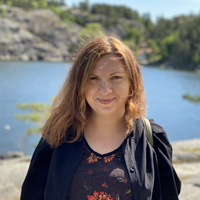
Yuliya Yurchuk is a Senior Lecturer of History at Södertörn University, Sweden. She specializes in memory studies, history of religion, and the study of nationalism in East European countries. She is the author of the book Reordering of Meaningful Worlds: Memory of the Organization of Ukrainian Nationalists and the Ukrainian Insurgent Army in Post-Soviet Ukraine (Acta 2014). Her articles have appeared in Memory Studies, Nationalities Papers, Europe-Asia Studies, Nordisk Østforum, Baltic Worlds, Ukraina Moderna. Her recent work focused on memory and religion. She is one of the editors of “Memory and Religion from a Postsecular Perspective” (Routledge, 2022, co-edited with Zuzanna Bogumil). Currently she is working on the project in the field of the transnational intellectual history titled “From Sweden with Love: Circulation and interpretation of Ellen Key’s ideas about love, motherhood, and upbringing in the late Russian Empire and the early Soviet Union (1890-1930s)” founded by the Foundation for Baltic and East European Studies.
Project partners
A comparative study on Hellenistic and Early Roman fine and semi-fine ware pottery from Nea Paphos and Kourion in Cyprus
Project information
Research project’s title: IMPORTant. A comparative study on Hellenistic and Early Roman fine and semi-fine ware pottery from Nea Paphos and Kourion in Cyprus
Funding: National Science Centre, Poland grant Sonatina 4 no. 2020/36/C/HS3/00068
Project lead: Mgr Małgorzata Kajzer
Project lead, institutional: Institute of Archaeology and Ethnology of the Polish Academy of Sciences
Cooperating Institutions: Department of Antiquities, Cyprus, Fitch Laboratory - British School at Athens
Contact:
e-mail: mkajzer(et)iaepan.edu.pl
Characteristics
Ceramics, being the most numerous category of movable archaeological material found during excavations, is an important manifestation of the functioning and everyday life of ancient communities. From the archaeologist's point of view, it is an essential tool, helpful in establishing the chronology of archaeological layers due to the variability of the shapes used in particular time periods. However, it was also a crucial element in the distribution of goods, acting as a container for other products or as an object of the trade itself. The latter is the case with fine and semi-fine ceramics, i.e. ceramics made from well-cleaned ceramic masses, which was the most luxurious category of ceramics, including tableware, cosmetic vessels and oil lamps, sometimes imported over long distances. The project is focused on ceramics representing the categories mentioned above, found within the area of two Cypriot port cities - Paphos and Kourion. Both of these centres, located in the south-western part of the island, at a distance of approx. 60 km from each other, performed an important function during the Hellenistic-Roman period (late 4th century BC - 4th century AD). In the case of Paphos, we can even speak of functions as the capital of the island from c. 200 BC. Due to the key role of this city, excavations have been carried out on its territory for years, and the area of the ancient city, a UNESCO World Heritage Site, is an excellent place for archaeological and conservation work. Despite the numerous discoveries, a complete study of the material culture of Paphos is still lacking, especially a study covering imports. The information published so far, based mainly on macroscopic analysis, indicates a diversity of ceramic imports from all over the Mediterranean, reflecting the high status of the city and its inhabitants.
Even less is known about Hellenistic and early Roman Kourion, where works concentrate on the Late Roman period and the moment when the city was destroyed by an earthquake in 365 AD. The proposed project aims to fill this research gap and attempt to reconstruct the supply patterns in both centres, the actual role of Kourion in the period under study and the relationship between the cities. In order to acquire data helping to achieve the research objectives, detailed analysis and comparative study of the ceramics found in both cities will be carried out, with an emphasis on imported tableware ceramics, particularly from outside Cyprus. This will allow for a better understanding of the functioning of the two cities at that time in terms of the distribution of ceramics, reflecting consumer preferences and their social position. The comparative study of imported table ceramics from Paphos, which functions as the capital, and Kourion, whose position is not well recognized, is innovative, also in terms of an integrated methodology combining archaeological and laboratory methods. The detailed macroscopic characterisation (observations carried out with the naked eye or with a magnifying glass) allows to classify the vessels, determine their types and chronology, describe the fabric and thus to define in a fundamental way the production technology and the potential provenance based on published analogies. More precise, scientific methods, on the other hand, allow us to look deep into the analysed material and examine the mineral (petrographic analysis) and chemical composition of the ceramics. This makes it possible to determine the place of manufacture due to the specific geology of individual geographical regions. The laboratory analyses will be conducted in the Fitch Laboratory in the British School at Athens, in the framework of the 6-month internship, planned as an integral part of the project.
More information:
https://polisharchaeologyincyprus.com/en/research/projects/important/
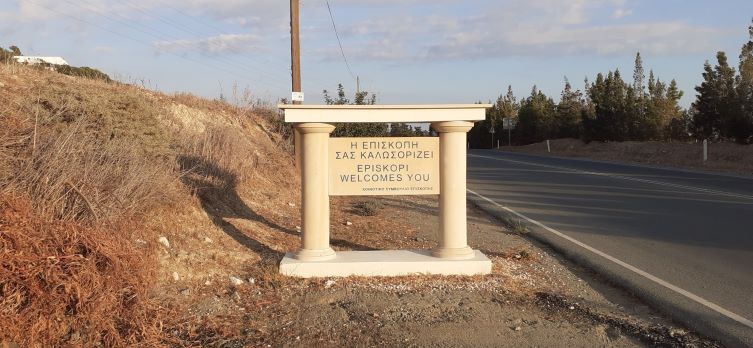
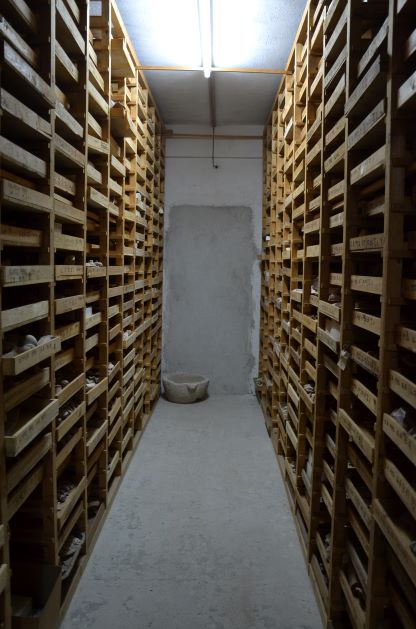

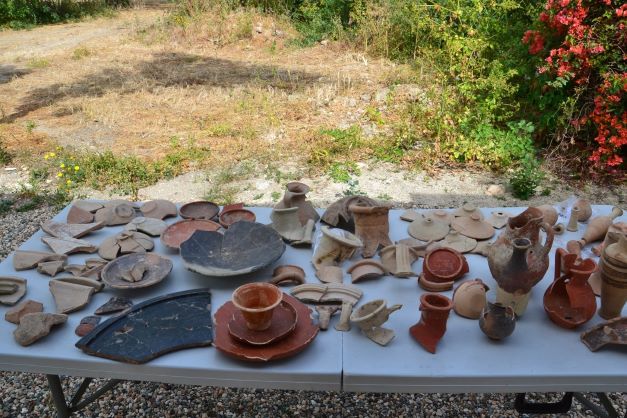
Investigation of the Sources and Uses of Obsidian during the Neolithic in Poland
Project information
Project title: Investigation of the Sources and Uses of Obsidian during the Neolithic in Poland
Project No: NCN OPUS 15 2018/29/B/HS3/01540
Project lead: dr Dagmara H. Werra
Project lead, institutional: Institute of Archaeology and Ethnology of the Polish Academy of Sciences
Project financing: National Science Center
Contact:
e-mail: werra@iaepan.edu.pl
phone (22) 620-28-81 do 86
Project implementation:
Institute of Archaeology and Ethnology of the Polish Academy of Sciences
Characteristics
Obsidian, the volcanic glass, was one of the best quality siliceous rocks utilized by pre-historical societies for making various kinds of tools. Due to its characteristic composition and the content of rare soil elements making for the geochemical "fingerprints", it is possible to determine the attributes characteristic for a given geological source of obsidian by applying various instrumental methods. In effect, we may compare the attributes of obsidian archaeological artefacts in order to determine the most probable place of origin for the raw material of which it had been made.
The project will involve a few analyses, among others carrying out EDXRF analysis. The results obtained allow for interpretations concerning the functioning of past societies in pre-history. It is possible to disclose the issues of access to the obsidian deposits and territory control, specialization, and the use of obsidian. The outcome of such analysis allows in the first line to follow the distribution routes of obsidian artefacts and to study the issues related to its acquiring, exchange and the contacts between communities in pre-history.
The oldest traces of using obsidian by prehistorical societies on Polish lands are dated to the Middle Palaeolithic. In Palaeolithic and Mesolithic, we find single specimens as very rare examples of a more numerous presence of obsidian artefacts (ex. Rydno, ochre mine). A dramatic increase in using obsidian begins with the arrival of the first Neolithic societies to Polish lands.
The goal of the presented project will be to recapture the distribution net of obsidian products and to examine the issues related to its mining, manufacturing, and exchange as practiced by Neolithic prehistorical societies.
The goal will be achieved by applying the technological-morphological analysis in combination with the refitting method and weight analysis. They will be performed in order to find out how the Neolithic communities utilized obsidian. We will find out if in comparison to other raw materials different splitting techniques were applied. These methods will also help to analyze in what form did obsidian reach the site: was it rolled as natural concretions and processed on the site, or did it rather come in form of ready tools or semi-products, and if so – which tools were preferred. At this stage of analysis trace evidence will be performed, in order to determine what was the purpose of obsidian products and whether it was different from the flint tools. Next, we will deal with the analysis of particular specimens, in order to determine the source of origin of the products and their chronology. Planned is a series of X-ray fluorescence analyses (energy dispersive X-ray fluorescence–EDXRF). This is a non-destructive method, which is fit to examine even small specimens. The method allows for determining the characteristic composition of a given specimen and will help to find its source of origin. Planned for the first time for Polish material is also dating of obsidian specimens by hydration. This method allows for determining the specimen chronology. Additionally planned at this stage is radiocarbon dating in order to establish the chronology of sites from which the obsidian originates and which were not dated up till now.
The analysis of such a large obsidian collection will allow for the first time on such a scale to attain a wide image of the distribution and use of this raw material in the Neolithic on Polish lands. In effect, we will obtain a picture of contact dynamics and of exchange in time. The project will also allow examining the issue of specialization and technology of using obsidian, as well as issues related to the scope of utilizing obsidian from particular deposits and how access to it was changing. It will contribute to the development of knowledge on past prehistoric societies – on their mutual contacts and the importance of imported products.
Publications:
Werra, D. H., Hughes, R. E., Nowak, M., Vizdal, M. and Gačková, L. (2021) Obsidian Source Use within the Alföld Linear Pottery culture in Slovakia, Sprawozdania Archeologiczne, 73(1), 331-369. doi: 10.23858/SA/73.2021.1.2615.
Werra, D.H., Woźny, M. and Trela-Kieferling, E. (2022) The investigations of obsidian in Poland – the beginning. In: Walking Among Ancient Trees. Studies in Honour of Ryszard Grygiel and Peter Bogucki. M. Grygiel and P. Obst (eds.), 521-532. Łodź: Wydawnictwo Fundacji Badań Archeologicznych Imienia Profesora Konrada Jażdżewskiego No. 31, Łódź 2022: Fundacja Badań Archeologicznych Imienia Profesora Konrada Jażdżewskiego and Muzeum Archeologiczne i Etnograficzne w Łodzi (alternatively Profil-Archeo Publishing House), ISBN 978-83-948140-9-0.
Kiosak, D., Kotova, N., Demchenko, O., Bardeckyi, A. and Werra, D. H. 2023. Verifying the chronology of Ukrainian Neolithic, Praehistorische Zeitschrift, 98(2), 419-436. https://doi.org/10.1515/pz-2022-2058
Moskal-del Hoyo, M., Korczyńska-Cappenberg, M., Kenig, R., Rauba-Bukowska, A., Roffet-Salque, M., Maule, Ch. A., Werra, D. H., Hughes, R. E., Kapcia, M., Wilczyński, J., Czekaj-Zastawny, A., Głód, A. and Nowak, M. 2024. An Early Neolithic house in the Foothills: A case study of pottery and lithic artefacts from the Biskupice site 18 (Wieliczka Foothills, southern Poland). Journal of Archaeological Science: Reports, Volume 53, 104346. https://doi.org/10.1016/j.jasrep.2023.104346.
Conferences:
International Obsidian Conference 2019, 27–29 May 2019, Sárospatak (Hungary): Dagmara H. Werra, Investigation of the sources and uses of obsidian during the Neolithic in Poland – preliminary review ;
26th EAA Virtual Annual Meeting 24-30 August 2020; Dagmara H. Werra, Richard E. Hughes, Import – gift – equivalent? Investigating the significance of obsidian during the Neolithic in Poland;
International Obsidian Conference 2021; 30.04-02.05.2021; Dagmara H. Werra, Richard E. Hughes, Marcin Szeliga, Geochemical and Technological Characterization of Obsidian Artefacts from the Neolithic Site of Opatów in Southeast Poland;
UISPP XIX World Congress - Meknes; 2-7.09.2021; Dagmara H. Werra, Marzena Woźny, Siliceous rocks mining, using and identification -short overview of a history of archaeological friendship between humanities and natural sciences;
27th EAA Annual Meeting (Kiel Virtual, 2021);6-11.09.2021; Dagmara H. Werra, Richard E. Hughes, Mark Nowak, Marián Vizdal, Lýdia Gačková; Alföld Linear Pottery Culture Communities in Eastern Slovakia (the North-Eastern Carpathian Basin) in the Light of Obsidian Source Use;
Summer School of Archaeology 2022, August 22–26, 2022; Eastern Slovakia, Tokaj Region; Dagmara H. Werra, Piotr Werens; Let's make tools not war. On the sources and uses of obsidian by prehistoric communities; https://www.castrum-zemlun.site/;
28th EAA Annual Meeting (Budapest, 2022); 31 August - 3 September 2022; Dagmara H. Werra, Marcin Szeliga, Katarzyna Pyżewicz; Value, Significance and use of ‘exotic’ materials – in view of the presence of obsidian on Neolithic sites in Poland;
7th Arch_RNT Archaeological Research & New Technologies, Kalamata, Greece,6 to 8 October 2022; M. Moskal-Del Hoyo, A. Rauba-Bukowska, R. Kenig, M. Roffet-Salque, C. Maule, D. H. Werra, M. Nowak, A. Czekaj-Zastawny and M. Korczyńska; A study of pottery and obsidians from an Early Neolithic house in the foothills: A case study of the Biskupice Site 18 (Wieliczka Foothills, Southern Poland);
29. stretnutie východoslovenských archeológov v Zemplínskom Múzeu v Michalovciach; 23 listopada 2022, Michalovce, Słowacja; Dagmara H. Werra, Richard E. Hughes, Marek Nowak, Marián Vizdal and Lýdia Gačková; Pochodzenie zabytków obsydianowych z wybranych stanowisk wczesnego neolitu na wschodniej Słowacji;
Przeszłość ma przyszłość! / The Past Has a Future! 4. Konferencja naukowa Wydziału Archeologii Uniwersytetu Warszawskiego (13-17.03.2023); Dagmara H. Werra, Marcin Szeliga, Katarzyna Pyżewicz: Pochodzenie i wykorzystanie obsydianu w neolicie ziem polskich – na przykładzie materiałów z Opatowa, Polska południowo-wschodnia;
International Obsidian Conference, 3-6 July 2023, Metroplaza (Engaru Town), Japan; Dagmara H. Werra, Marcin Szeliga, Richard E. Hughes, and Rafał Siuda: Technological analysis and geochemical characterization of obsidian artefacts from the Neolithic sites from Poland: An overview; Dagmara H. Werra, Katarzyna Pyżewicz, and Jolanta Małecka-Kukawka: The use of obsidian by Neolithic communities in the light of the use-wear analysis: A few observations from Poland;
XXth UISPP World Congress, September 5-9, 2023 West University of Timișoara, Romania; Dagmar H. Werra, Anna Sokólska-Majchrzak: Differentiation of siliceous rocks used by Final Paleolithic communities in the Vistula River basin; Dagmar H. Werra: Relationship between the settlements and the outcrops in the light of the extraction, exchange, and use of obsidian;
XXXVIII Lubelska Konferencja Badania Archeologiczne w Polsce: Środkowowschodniej, Zachodniej Białorusi i Ukrainie, Lublin-Zamek, 6-7 listopada 2023 r.; Dagmara H. Werra, Marcina Szeliga, Katarzyna Pyżewicz, Richard Hughes: Neolityczny inwentarz obsydianowy z Opatowa w świetle wyników najnowszych analiz technologicznych, funkcjonalnych i geochemicznych;
They write about us:
Nauka w Polsce: Szymon Zdziebłowski, "Smocze szkło" na terenie dzisiejszej Polski było znane już ponad 20 tys. lat temu
Facebook:
XXth UISPP World Congress, September 5-9, 2023 West University of Timișoara, Romania
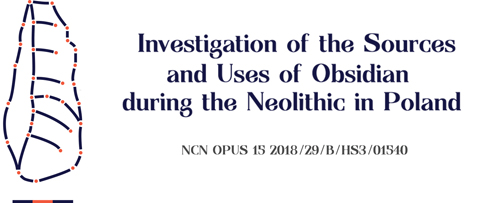
Topographic map of Galicia (1779–1783) from War Archives in Vienna
Project information
A package of coordinated projects for the publication of the Josephine land survey of Galicia. They are being prepared thanks to grants awarded by the Foundation for Polish Science, the Ministry of Science and Higher Education, the National Science Centre, and the National Program for the Development of the Humanities in the years 2008-2021.
Five institutions are involved:
Institute of Archaeology and Ethnology, Polish Academy of Sciences (project leader: Andrzej Janeczek),
Institute of History, Polish Academy of Sciences (project leader: Waldemar Bukowski),
Institute of History of the Pedagogical University in Cracow (project leader: Zdzisław Noga).
Institute of History of the University of Rzeszów (project leader: Zdzisław Budzyński),
Polish Academy of Sciences Scientific Center in Vienna (Bogusław Dybaś).
Project website http://www.iaepan.vot.pl/galicja/index-en.html
Deutsche Fassung http://www.iaepan.vot.pl/galicja/index-de.html
THE PAST SOCIETIES. Polish lands from the first evidence of human presence to the Early Middle Ages
Project information
Project title: THE PAST SOCIETIES. Polish lands from the first evidence of human presence to the Early Middle Ages
Project No: 11H 11 0186 80
Project lead: Prof. dr hab. Przemysław Urbańczyk
Project lead, institutional: Institute of Archaeology and Ethnology of the Polish Academy of Sciences
Project financing: Research financed within the National Humanities Programme, a project of the Ministry of Science and Higher Education, in 2012–2015
Contact:
e-mail: uprzemek@iaepan.edu.pl
phone (22) 620-28-81 do 86
Project implementation:
Institute of Archaeology and Ethnology of the Polish Academy of Sciences
Characteristics
The aim of the project is to write and publish a synthesis of the prehistory of Polish lands in English. It will be an up-to-date compendium of knowledge on cultural processes in the period from more than 0.5 million years ago, when the first settlers came to these lands, to the establishment of a stable state organization which around the year 1000 became an integral part of Latin Europe. In recent years, due to intensified excavations throughout the country, there has been a rapid increase in the number of new archaeological finds that led to many, often revelatory discoveries. There have been also considerable changes in archaeological research methods. They have been partly due to the development of the theoretical basis and methodological perspectives in the field which provided a new insight into both social and historical processes as well as the classification and chronology of available sources. Furthermore, our knowledge on all historical periods has fundamentally changed since “The Prehistory of Polish Lands” (1975-1979) was published. A new synthesis of the prehistory of Polish lands should go beyond offering a potential new classification and chronology of the past events and take up the challenge of presenting a new interpretation of this distant past. The resulting monograph will be addressed both to archaeologists and to representatives of other disciplines (mainly historians). The final result of the project will be a 5-volume book in English. It will be published as well in an electronic version (e-book).
Weklice – a Wielbark Culture cemetery
Project information
Project title: Weklice – a Wielbark Culture cemetery. Project implemented within the programme in the years 2003–2007
Findings of this research are provided in a joint paper by Professor Jerzy Okulicz-Kozaryn and Mgr Magdalena Natuniewicz-Sekuła, who carries out the present excavations. Over the recent years, the IAE research has produced very interesting new discoveries about Wielbark population’s customs. In addition to that, in 2004, a settlement of the population using the cemetery was uncovered in its immediate vicinity. Consequently, an urgent need emerged to conduct preliminary excavation research also at the settlement.
Project implementation
Cooperating Institutions:
IAUW
Państwowe Muzeum Archeologiczne
Instytut Archeologii i Etnologii, Uniwersytet w Kopenhadze
Akademia Medyczna w Szczecinie
WOSOZ w Elblągu
Muzeum Archeologiczno-Historyczne w Elblągu
Osoby zaangażowane w projekt:
prof. dr hab. Jerzy Okulicz-Kozaryn (IAUW) - mistrz i patron merytoryczny badań
mgr Magdalena Natuniewicz-Sekuła - kierownik badań, archeolog (IAiE PAN
dr Bartosz Kontny - archeolog (IAUW)
mgr Urszula Bugaj - archeolog (IAiE PAN)
mgr Marta Dec - archeolog i terenowy konserwator (Państwowe Muzeum Archeologiczne)
M.A. Christina Rein - Seehusen - archeolog (Instytut Archeologii i Etnologii, Uniwersytet w Kopenhadze) - współpraca polsko - duńska
dr Iwona Teul - antropolog (Pomorska Akademia Medyczna w Szczecinie)
mgr Rafał Panfil - historyk i praktyczny archeolog (WOSOZ w Elblągu)
Andrzej Szwemiński - rysownik i znawca terenu (Muzeum Archeologiczno-Historyczne w Elblągu)
studenci Instytutu Archeologii UW



